Kenya is home to a wide variety of birds. From the iconic ostrich to the majestic crowned crane, the country is home to many avian species. From the wetlands of the Rift Valley to the dry acacia savannahs of the Masai Mara, Kenya’s birds are an integral part of the country’s wildlife.
Some of these birds are rare and endangered, while others are common and abundant. This article will provide an overview of the different types of birds found in Kenya, as well as a look at some of the more popular species.
1. Lilac-Breasted Roller
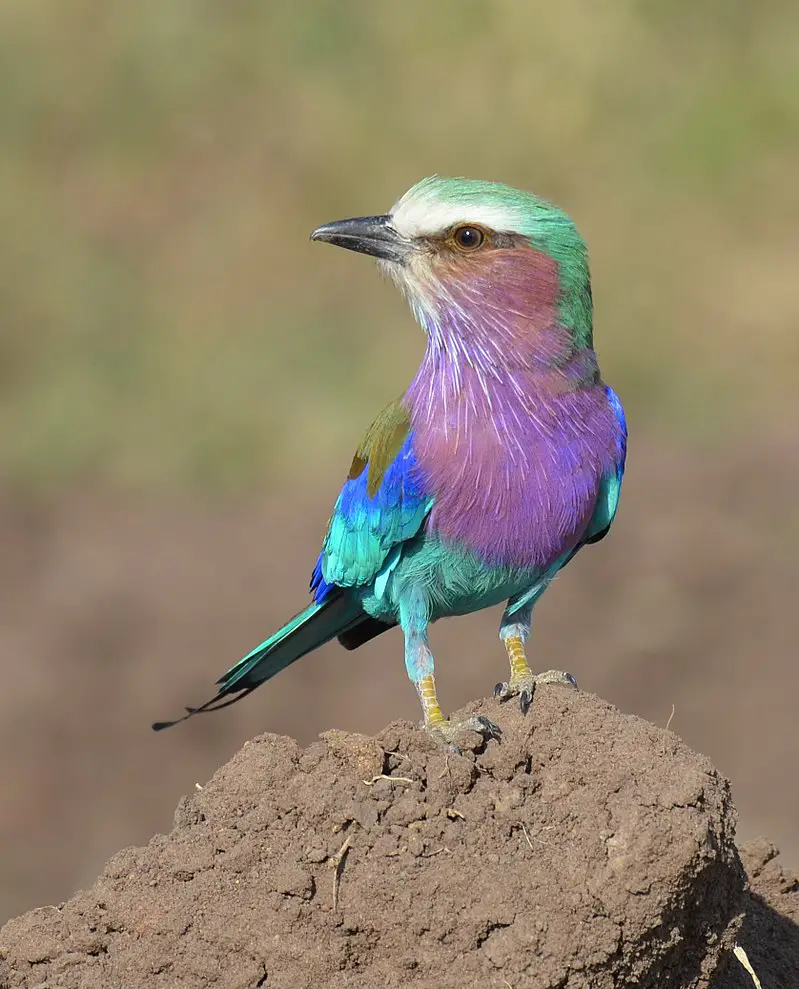
The Lilac-breasted Roller is a spectacular bird native to Southern and Eastern Africa, with occasional appearances in the southern Arabian Peninsula.
With its bright purple chest plumage and distinct black stripes on its wings and tail feathers, it stands out among birds of the same family.
It is usually found alone or in pairs perched atop trees or other high viewpoints, often used as lookout points for predators.
This species prefers open areas such as woodlands and savannas; it avoids treeless places like deserts due to their lack of protection from potential dangers.
Its call is loud and melodious – an unmistakable sound echoing through African skies.
Scientific classification:
| Kingdom | Animalia |
| Phylum | Chordata |
| Class | Aves |
| Order | Coraciiformes |
| Family | Coraciidae |
| Genus | Coracias |
| Species | C. caudatus |
2. Turaco
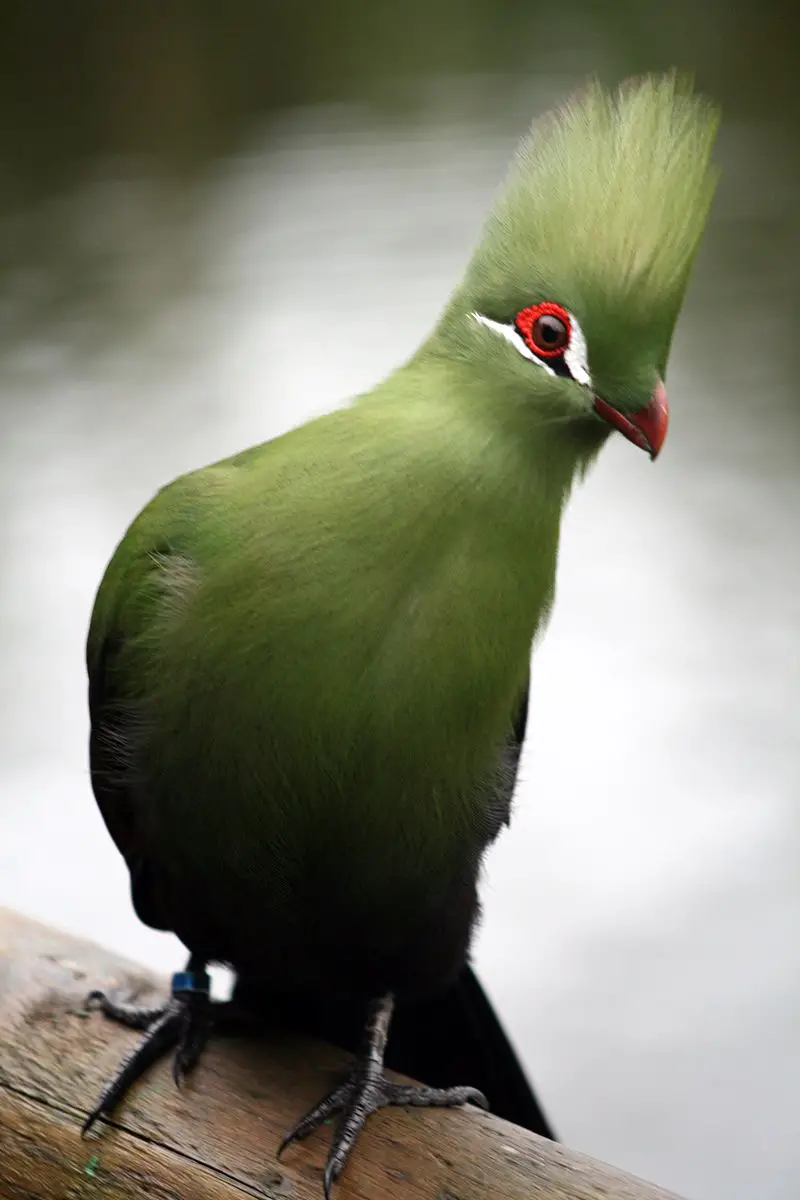
Turacos are a unique bird family that inhabit tropical and subtropical regions of Africa. They are also known as “banana-eaters” or “loeries” in southern Africa, due to their diet which consists mostly of fruit such as plantains.
These birds have an interesting semi-zygodactylous foot structure – the fourth toe can be switched back and forth while the second and third toes remain conjoined.
Turacos come in different sizes depending on species but they all generally boast bright colors like green, blue, purple or red feathers with vibrant yellow eyes.
In addition to being beautiful creatures, these birds make loud calls during mating season which makes them even more special.
Scientific classification:
| Kingdom | Animalia |
| Phylum | Chordata |
| Class | Aves |
| Clade | Otidimorphae |
| Order | Musophagiformes Seebohm, 1890 |
| Family | Musophagidae Lesson, 1828 |
3. Grey Crowned Crane

The Grey Crowned Crane is a beautiful bird native to eastern and southern Africa. It belongs to the crane family, Gruidae, and its stunning plumage consists of grey feathers topped with golden crowns on their heads.
This species has become Uganda’s national bird due to its gracefulness in flight as well as for being an important part of local cultures across the continent.
The Grey Crowned Crane stands out from other birds not only because of its colorful appearance but also because it performs elaborate mating dances involving leaps, bows, throwing their head back or flapping wings while calling loudly – all in an effort to attract a mate.
In addition to these displays they are highly social animals that form strong bonds with one another and can live up 20 years if given proper care.
Scientific classification:
| Kingdom | Animalia |
| Phylum | Chordata |
| Class | Aves |
| Order | Gruiformes |
| Family | Gruidae |
| Genus | Balearica |
| Species | B. regulorum |
4. Northern Carmine Bee-Eater
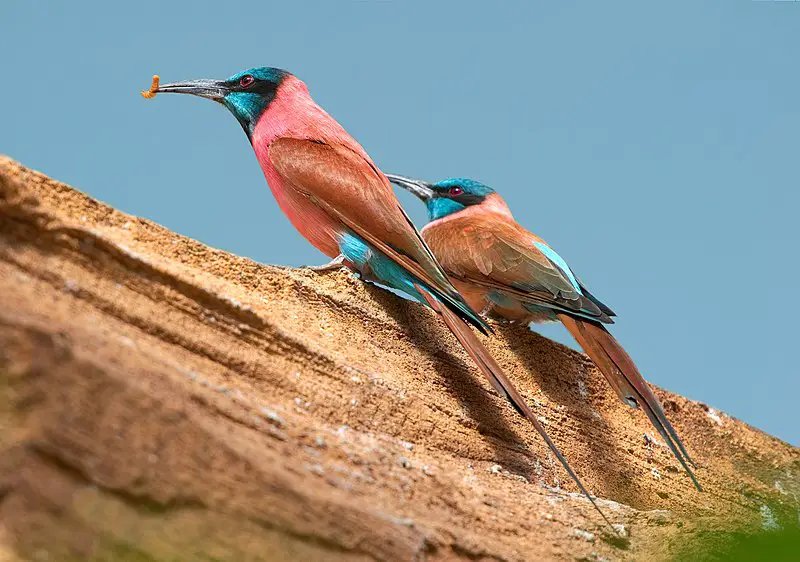
The Northern Carmine Bee-eater is a beautiful bird with striking colors. It has bright red and blue plumage, with the throat being predominantly carmine in color.
This species of bee-eater can be found throughout northern tropical Africa, from Senegal east to Somalia, Ethiopia and Kenya.
It was previously assumed to be closely related to the Southern Carmine Bee-eater which has a scarlet colored throat instead of blue as seen in this species.
The Northern Carmine Bee-Eater feeds on flying insects such as bees and other small creatures that it catches midair using its sharp claws and bill for grabbing them quickly before they escape.
Scientific classification:
| Kingdom | Animalia |
| Phylum | Chordata |
| Class | Aves |
| Order | Coraciiformes |
| Family | Meropidae |
| Genus | Merops |
| Species | M. nubicus |
Also Featured In: Chad Birds You Didn’t Know,
5. Superb Starling
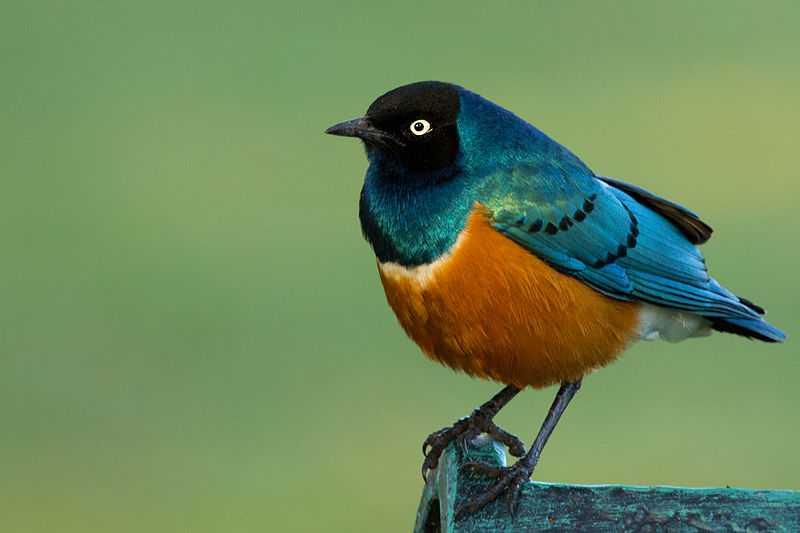
The Superb Starling is an impressive bird native to East Africa. It belongs to the starling family and was previously known as Spreo superbus.
This species can be found in Ethiopia, Somalia, Uganda, Kenya, South Sudan and Tanzania living in savanna areas with thornbush and acacia trees or near open woodlands or lakeshores.
Its plumage is mainly black with bright yellow patches on its wings while its bill is a distinctive grey-blue coloration.
The male has glossy blue feathers around his head giving him a distinguished look that stands out from other birds of this type.
In addition they possess long tails which make them great gliders when soaring through their habitats looking for food such as insects, crops or small animals like frogs and lizards to eat.
Scientific classification:
| Kingdom | Animalia |
| Phylum | Chordata |
| Class | Aves |
| Order | Passeriformes |
| Family | Sturnidae |
| Genus | Lamprotornis |
| Species | L. superbus |
6. Saddle-Billed Stork
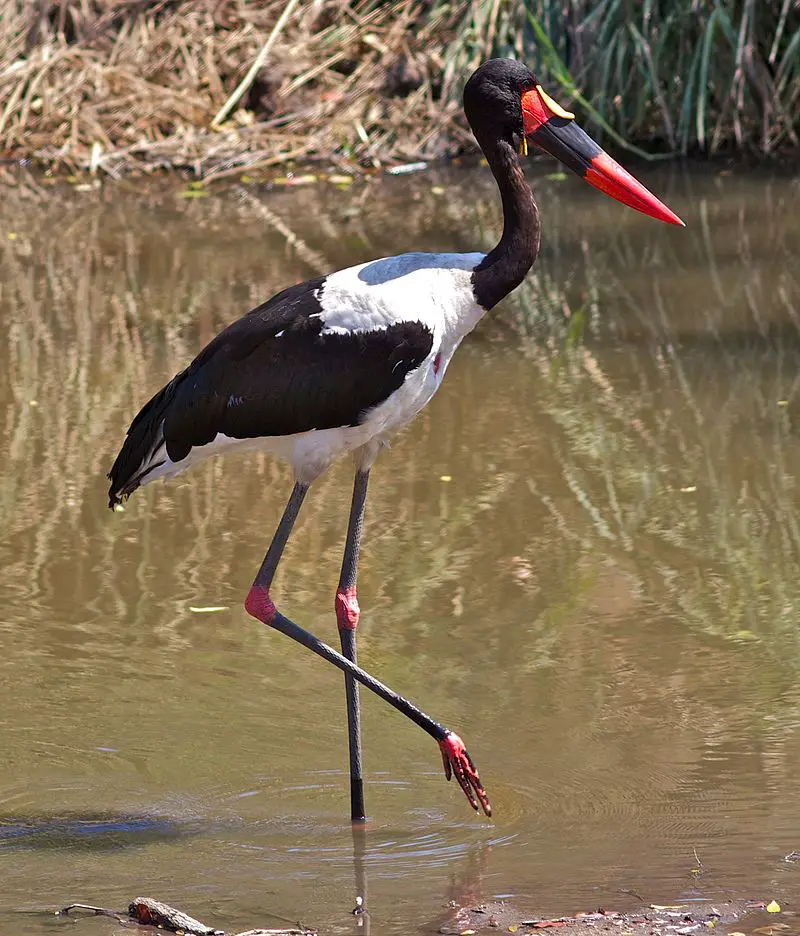
The Saddle-billed Stork is a large wading bird from the stork family, Ciconiidae. It can be found in sub-Saharan Africa and some parts of western Africa.
This majestic bird stands out with its striking features – it has an impressive bill that looks like a saddle and bright red legs which contrast against its white plumage on top.
The Saddle-billed Stork’s diet consists mostly of fish, frogs, aquatic invertebrates as well as small reptiles or mammals they come across while scavenging for food in wetland areas.
Sadly, this species is considered endangered in South Africa due to habitat loss and degradation caused by human activities such as drainage projects and agricultural expansion.
We must take action to protect these beautiful creatures before their numbers decrease further.
Scientific classification:
| Kingdom | Animalia |
| Phylum | Chordata |
| Class | Aves |
| Order | Ciconiiformes |
| Family | Ciconiidae |
| Genus | Ephippiorhynchus |
| Species | E. senegalensis |
7. Tawny Eagle
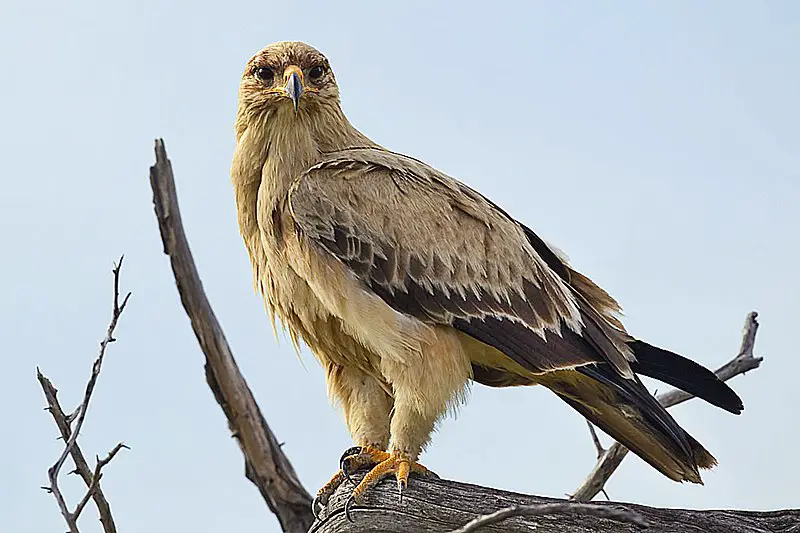
The tawny eagle is a majestic bird of prey that can be found across much of Africa, the Indian subcontinent and rare parts of southern Europe.
It belongs to the Accipitridae family, within the Aquilinae or “booted eagles” subfamily due to its heavily feathered legs.
They have brown plumage with paler underparts which gives them their namesake tawny colouring.
With long wingspans they soar gracefully over open grasslands and deserts in search of small mammals such as hares, rodents and birds for food.
Their loud squawks echo across their habitats while they use powerful talons to snatch up unsuspecting animals below them before enjoying their meal on an exposed perch high above ground level.
Scientific classification:
| Kingdom | Animalia |
| Phylum | Chordata |
| Class | Aves |
| Order | Accipitriformes |
| Family | Accipitridae |
| Genus | Aquila |
| Species | A. rapax |
8. Woodland Kingfisher
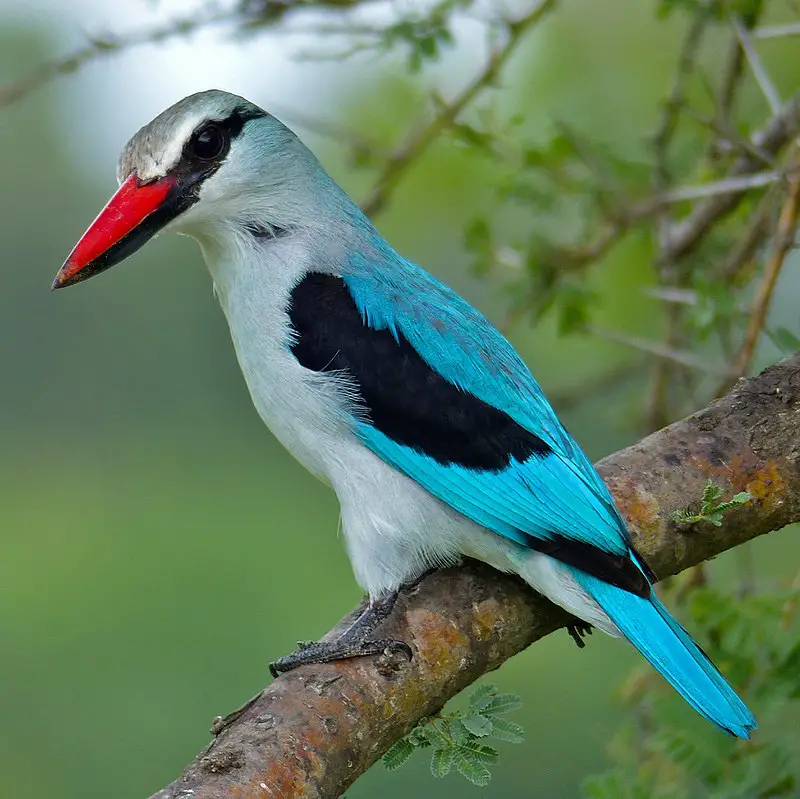
The Woodland Kingfisher is a beautiful bird, native to Africa south of the Sahara. It was first described in 1766 by Carl Linnaeus who called it Alcedo senegalensis.
This tree kingfisher has an attractive blue and white plumage with some red and black markings on its wings, tail and head.
The male also has a bright orange beak which helps to distinguish him from the female whose beak is yellowish-green.
These birds can usually be found in wooded areas near water sources such as rivers or lakes where they hunt for food including fish, frogs, small insects and even lizards.
They build their nests either high up in trees or inside holes dug out of banks near rivers and ponds.
Although not threatened yet, these lovely creatures need our protection so that future generations will have the chance to marvel at them too.
Scientific classification:
| Kingdom | Animalia |
| Phylum | Chordata |
| Class | Aves |
| Order | Coraciiformes |
| Family | Alcedinidae |
| Subfamily | Halcyoninae |
| Genus | Halcyon |
| Species | H. senegalensis |
9. Grey-Headed Kingfisher
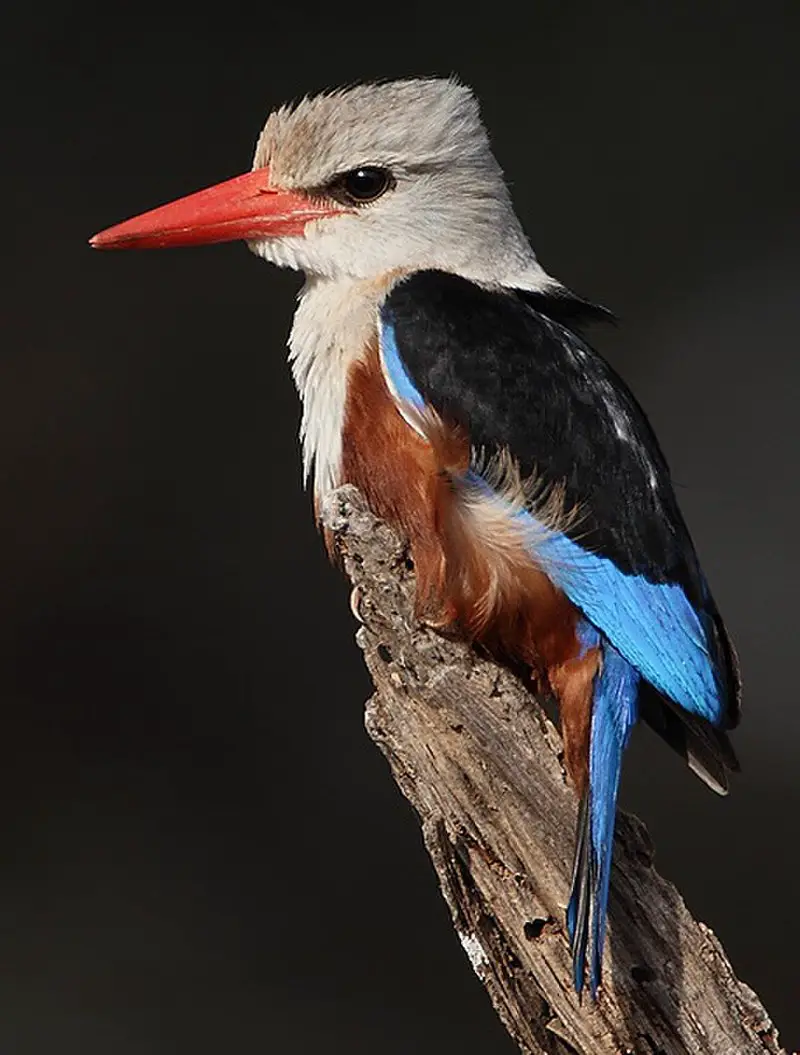
The Grey-headed Kingfisher is a stunning species of kingfisher that can be found across much of Africa and the Middle East. Its striking grey head, white neck, black back and wings with blue speckles make it an instantly recognizable bird.
It has been described formally by German zoologist Philipp Ludwig Statius Müller since 17.
This small but beautiful predator feeds mainly on insects such as beetles, grasshoppers and cicadas which they catch while hovering over water or in flight from perches up to 20 meters above ground level.
They are monogamous birds who will form lifelong pair bonds during mating season when males display courtship behavior including tail fanning and bill clacking displays at their chosen mate’s nest site.
These little birds play an important part in African ecosystems so we should all take care to preserve them for future generations.
Scientific classification:
| Kingdom | Animalia |
| Phylum | Chordata |
| Class | Aves |
| Order | Coraciiformes |
| Family | Alcedinidae |
| Subfamily | Halcyoninae |
| Genus | Halcyon |
| Species | H. leucocephala |
10. Striped Kingfisher
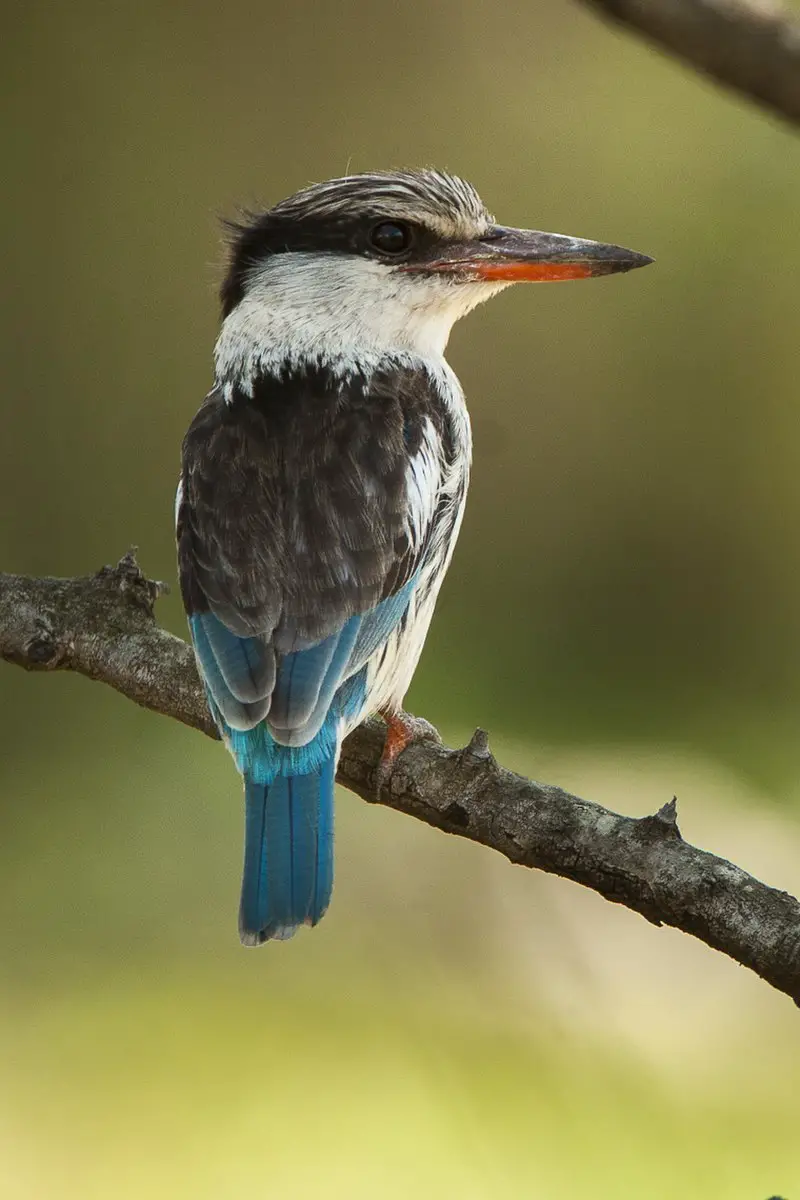
The Striped Kingfisher is a species of bird in the tree kingfisher subfamily.
It was first described by Edward, Lord Stanley as Alaudo Chelicuti and its genus name Halcyon comes from an ancient Greek legend which associates it with the kingfisher.
This beautiful bird has distinctive black stripes on its back and wings, along with bright blue feathers covering most of its body.
The bill is large and stout while the legs are short but strong for perching on branches or diving into water to catch prey such as fish or crustaceans.
Its call consists of loud chirps that can be heard over long distances making it easy to identify in forests near streams or rivers during migration season when they travel through Africa towards Asia between October-March each year.
Scientific classification:
| Kingdom | Animalia |
| Phylum | Chordata |
| Class | Aves |
| Order | Coraciiformes |
| Family | Alcedinidae |
| Subfamily | Halcyoninae |
| Genus | Halcyon |
| Species | H. chelicuti |
Also Featured In: Birds You’ll Find in Kenya Safari,
11. Hamerkop
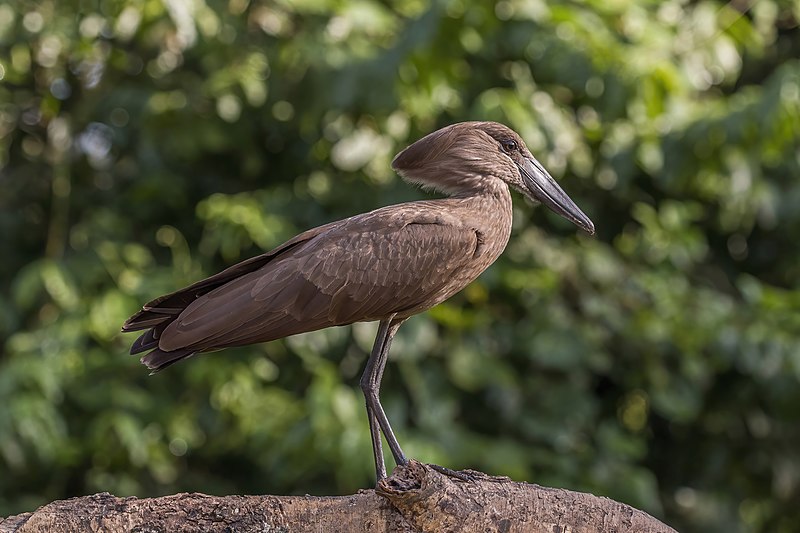
The Hamerkop is a unique wading bird found across sub-Saharan Africa and as far east as India.
It has an unmistakable silhouette, with its long bill topped by a crest at the back of its head that gives it the look of a hammerhead shark.
Its plumage consists mainly of browns and greys, providing excellent camouflage in reed beds.
The species was once classified alongside storks but is now believed to be closely related to pelicans and shoebills instead.
This medium-sized bird feeds on insects, fish, frogs or small reptiles which it captures from shallow water or plucks from trees near bodies of water.
Despite being considered ‘unlucky’ by some cultures due to superstition surrounding their appearance they are actually quite important for controlling populations of certain pests.
Scientific classification:
| Kingdom | Animalia |
| Phylum | Chordata |
| Class | Aves |
| Order | Pelecaniformes |
| Family | Scopidae |
| Genus | Scopus |
| Species | S. umbretta |
12. Speckled Pigeon
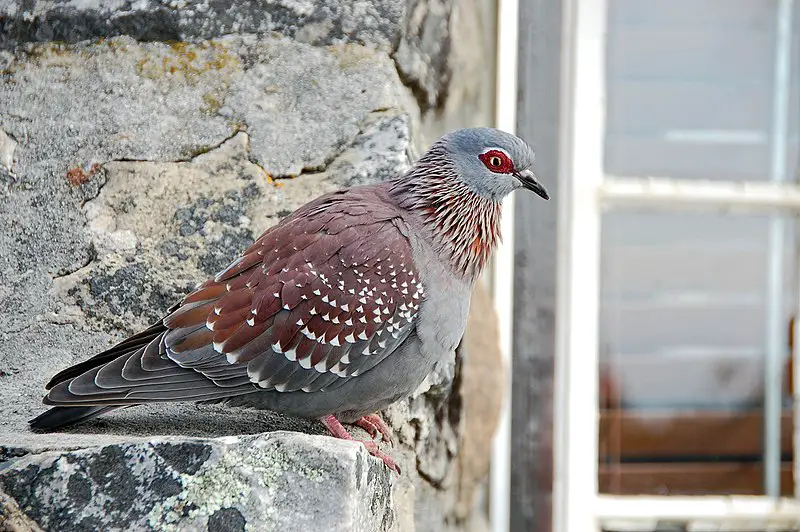
The Speckled Pigeon, also known as the African Rock Pigeon or Guinea pigeon due to its similar coloring to some species of guineafowl, is a resident breeding bird in much of Africa south of the Sahara.
It’s commonly seen inhabiting open habitats and has been around since 1747 when it was first described by Swedish naturalist Carl Linnaeus.
These birds usually have grey bodies with speckles on their wings, although they can vary from brownish-grey to dark slate blue depending on where they’re found geographically.
They feed mostly on seeds and other grain crops but will sometimes supplement that diet with insects if available.
In general these pigeons are harmless unless threatened – so be sure not to startle them.
Scientific classification:
| Kingdom | Animalia |
| Phylum | Chordata |
| Class | Aves |
| Order | Columbiformes |
| Family | Columbidae |
| Genus | Columba |
| Species | C. guinea |
13. Eastern Yellow-Billed Hornbill
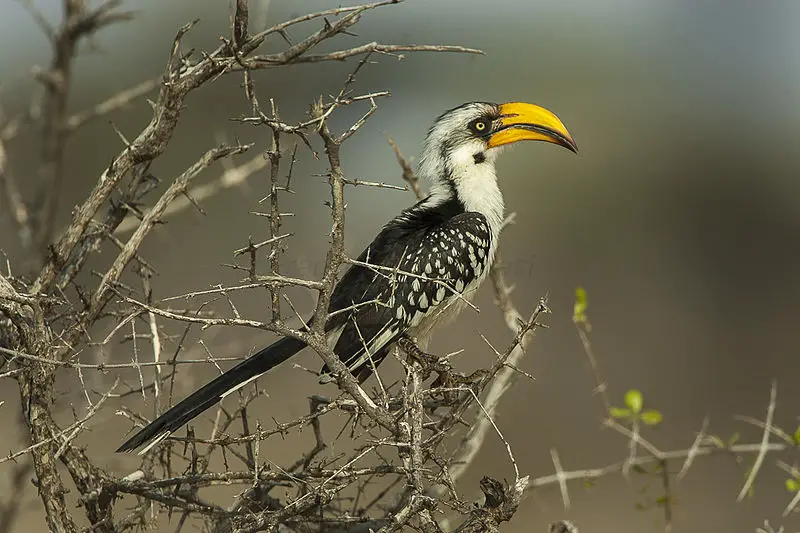
The Eastern yellow-billed hornbill is a species of bird that belongs to the family Bucerotidae. It can be found in countries such as Djibouti, Eritrea, Ethiopia, Kenya, Somalia South Sudan and Uganda.
This species closely resembles its Southern counterpart but has distinct blackish skin around the eyes instead of pinkish one. These birds have strong beaks which helps them forage for food easily and also defend themselves against predators if needed.
Their diet mainly consists of insects with fruits making up an occasional treat. They are mostly seen living on trees located near water sources like rivers or lakes where they find their food source close by while keeping safe from predators simultaneously
Scientific classification:
| Kingdom | Animalia |
| Phylum | Chordata |
| Class | Aves |
| Order | Bucerotiformes |
| Family | Bucerotidae |
| Genus | Tockus |
| Species | T. flavirostris |
14. African Olive Pigeon
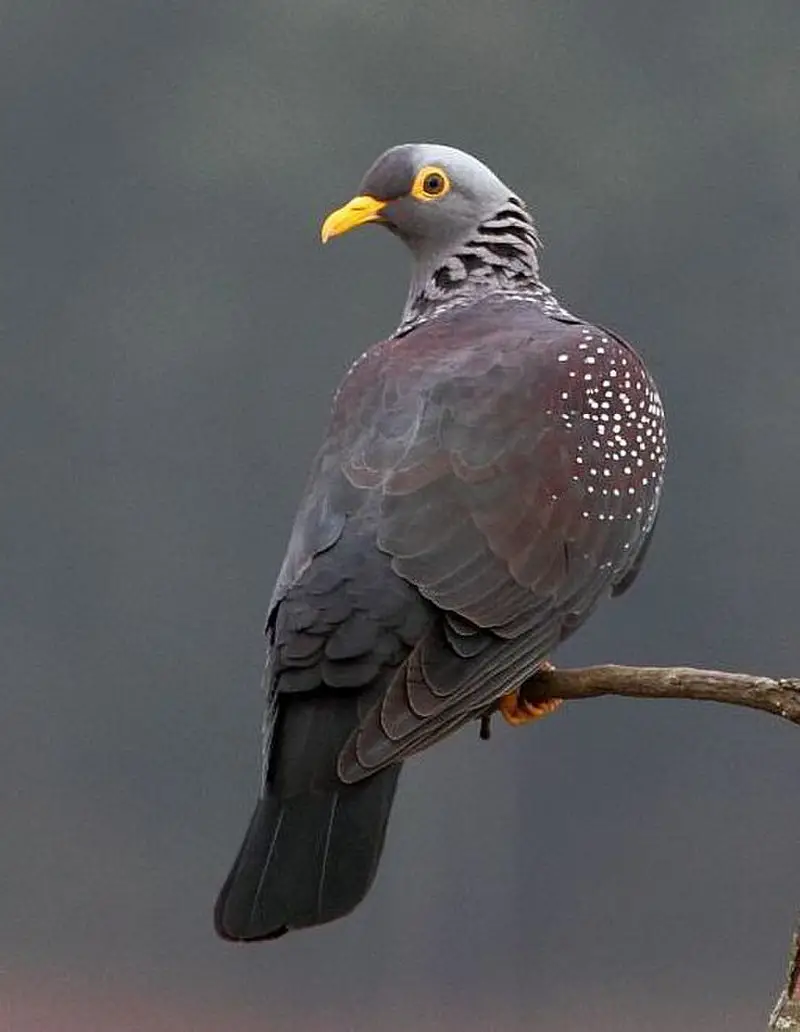
The African olive pigeon is a common resident of eastern and southern Africa, as well as parts of Angola, Saudi Arabia and Yemen.
It has beautiful gray-brown feathers with white spots on its wings.
The adult male bird displays an iridescent green neck patch while the female lacks this distinctive coloration.
This species prefers open woodland areas or savannas where they feed primarily on seeds, fruits and buds found in tall trees or shrubs.
When breeding it builds a flimsy platform nest located high up in a tree canopy to lay two eggs which hatch after 14 days incubation period by both parents caring for their young until fledging at around 28 days old.
Scientific classification:
| Kingdom | Animalia |
| Phylum | Chordata |
| Class | Aves |
| Order | Columbiformes |
| Family | Columbidae |
| Genus | Columba |
| Species | C. arquatrix |
15. Black Cuckoo
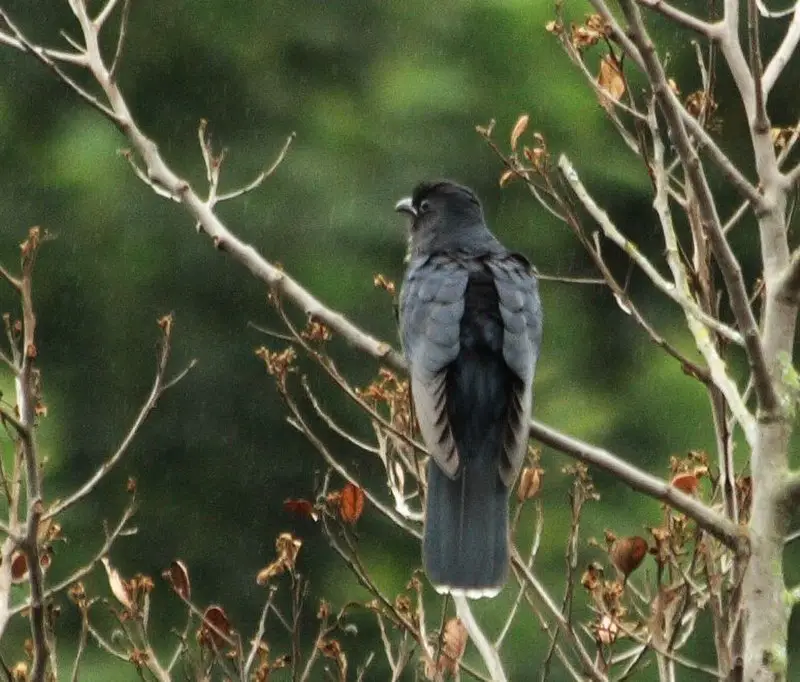
The Black Cuckoo is a species of cuckoo native to sub-Saharan Africa. It has two distinct subspecies and is classified as “Least Concern” by the International Union for Conservation of Nature due to its wide range and high population numbers.
This bird measures about 32 cm in length, with males slightly larger than females. Its plumage varies from black or grey on its upperparts, while it’s underparts are white or light grey in colour, sometimes flecked with darker markings.
The wings have dark outer feathers but barred inner ones; the tail is rounded and usually blackish brown above while being whitish underneath.
This cuckoo feeds mainly on insects such as beetles and caterpillars which it finds amongst foliage or along woodland edges, occasionally also taking berries when available.
A distinctive call can be heard throughout much of their distribution area during breeding season – consisting of a soft ‘coo’ followed by an upward trill that increases in pitch at the end.
Scientific classification:
| Kingdom | Animalia |
| Phylum | Chordata |
| Class | Aves |
| Order | Cuculiformes |
| Family | Cuculidae |
| Genus | Cuculus |
| Species | C. clamosus |
16. Pied Kingfisher
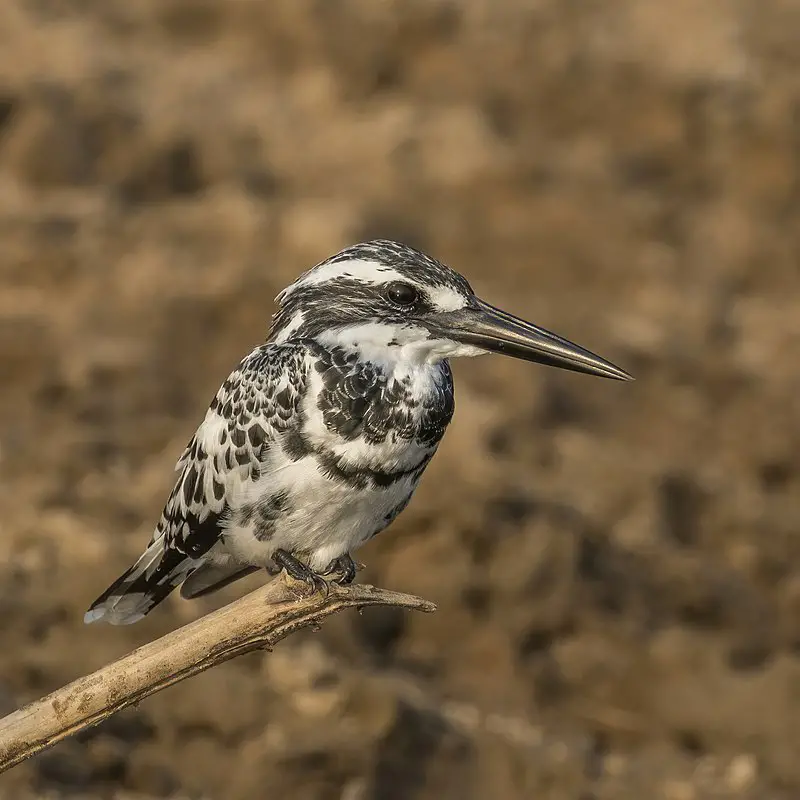
The Pied Kingfisher is a species of water kingfisher found in Africa and Asia. It has black and white plumage, with males sporting a double band across the breast while females have one single band.
This bird makes its presence known by hovering over clear waters before diving for fish – making it easily recognizable.
The diet consists mostly of small aquatic animals such as frogs, crustaceans and insects, but they also consume some plant matter like seeds or fruits occasionally.
The pied kingfisher nests near bodies of water where it can feed off smaller creatures that dwell there; usually in burrows dug into riverbanks or on floating vegetation close to shorelines.
With their distinct colors and behavior patterns these birds make an interesting addition to any wildlife enthusiast’s list.
Scientific classification:
| Kingdom | Animalia |
| Phylum | Chordata |
| Class | Aves |
| Order | Coraciiformes |
| Family | Alcedinidae |
| Subfamily | Cerylinae |
| Genus | Ceryle F. Boie, 1828 |
| Species | C. rudis |
17. Abyssinian Roller
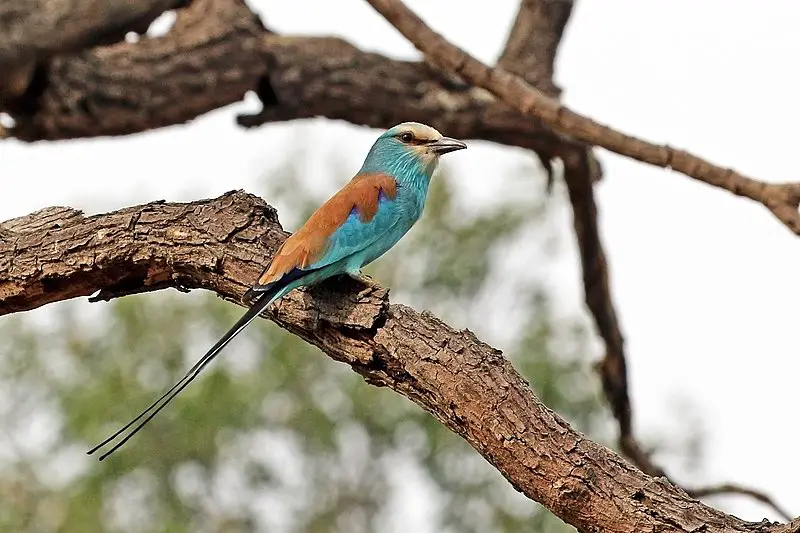
The Abyssinian roller is a large bird, nearly 28 cm in length. It has an unmistakable plumage of bright blue upperparts with chestnut underparts and wings.
Its head is blackish-blue and its tail feathers are white tipped giving it a striking appearance when seen in flight.
This species breeds across tropical Africa from the Sahel belt south of the Sahara desert to East Africa.
Northern populations tend to migrate short distances after wet season while southern ones stay resident throughout year.
They feed mainly on insects which they catch by hovering over fields or open woodland before diving down onto their prey below them.
In addition, they also eat small reptiles, amphibians and rodents along with fruits such as figs occasionally too.
Scientific classification:
| Kingdom | Animalia |
| Phylum | Chordata |
| Class | Aves |
| Order | Coraciiformes |
| Family | Coraciidae |
| Genus | Coracias |
| Species | C. abyssinicus |
18. Lappet-Faced Vulture
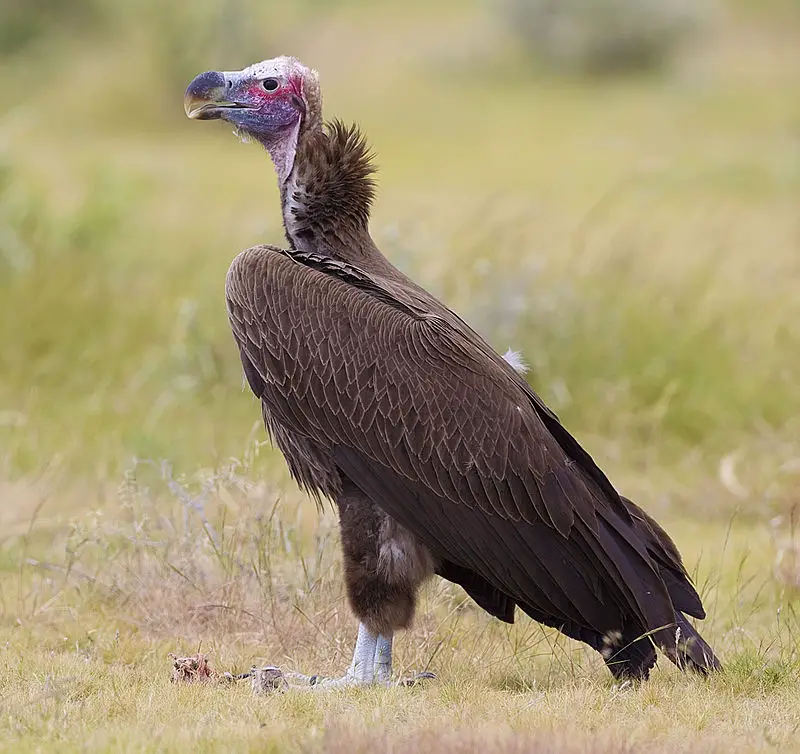
The Lappet-faced Vulture is a large bird of prey belonging to the Accipitriformes order. It has an unmistakable look, with its bare head and neck, white body and brown wings.
This species is native to Africa where it can be found in very dry areas such as deserts or semi-deserts. They feed mainly on carrion but they also eat small animals like lizards or rodents if needed.
Their strong bill helps them tear through tough hides while their long legs help them find food easier by allowing them to walk around looking for it instead of relying solely on soaring high up into the sky like other vultures do to locate carcasses from afar.
The Lappet-faced Vulture plays a crucial role in cleaning up carcasses which otherwise would spread diseases quickly throughout African ecosystems.
Scientific classification:
| Kingdom | Animalia |
| Phylum | Chordata |
| Class | Aves |
| Order | Accipitriformes |
| Family | Accipitridae |
| Genus | Torgos Kaup, 1828 |
| Species | T. tracheliotos |
Also Featured In: African Birds, Birds that You’ll Find in Kruger national park
19. Rüppell’s Vulture
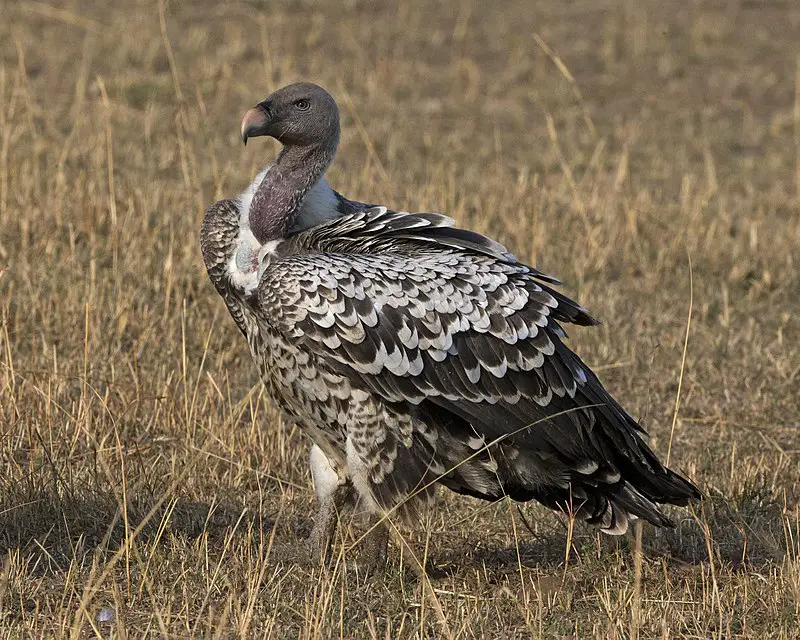
Rüppell’s vulture is a large bird of prey native to the Sahel region and East Africa, named after Eduard Rüppell.
It has a current population of around 22,000 but its numbers are decreasing due to loss of habitat, accidental poisoning and other factors.
This species can be identified by their dark brown bodies with white patches on their wings and black feathers at the base of their neck that form an “M” pattern.
They have grayish-white heads with yellow eyes surrounded by bare skin colored pink or red depending upon age/sex.
Their strong feet enable them to hold onto food while they tear it apart using powerful hooked beaks which also help them scavenge for carrion in open grasslands or savanna habitats where they primarily feed off dead animals.
Scientific classification:
| Kingdom | Animalia |
| Phylum | Chordata |
| Class | Aves |
| Order | Accipitriformes |
| Family | Accipitridae |
| Genus | Gyps |
| Species | G. rueppelli |
Also Featured In: Flight Birds You Should Know, East African Birds
20. Kori Bustard
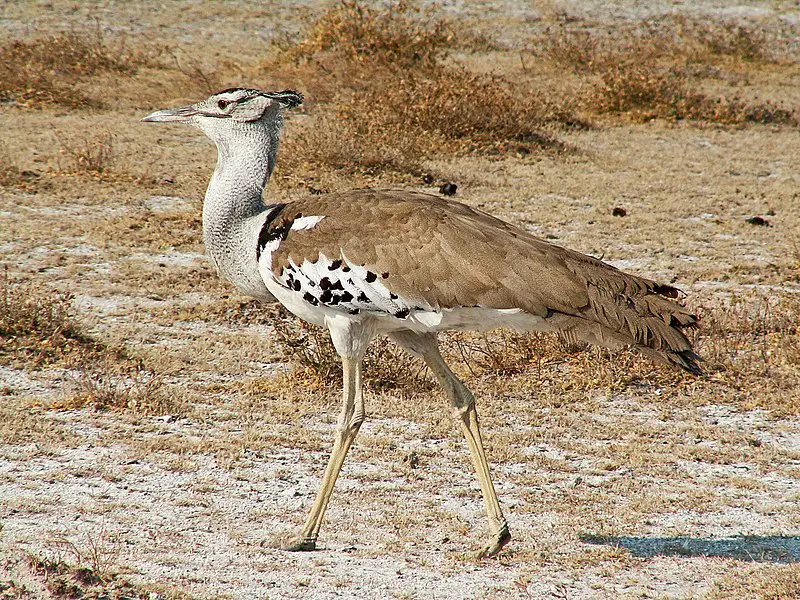
The Kori Bustard is the largest flying bird native to Africa and part of the bustard family. It has a large body, with males reaching up to 20kg in weight – making it one of the heaviest living animals capable of flight.
Its range covers most African countries from Ethiopia all the way down south towards South Africa.
The Kori Bustard is omnivorous and feeds on insects, small lizards, seeds, fruit and even carrion if available.
Their feathers are mostly brownish grey while their heads have black stripes running over them which makes them easily identifiable when seen in its natural habitat.
They usually live alone or in pairs during breeding season but will gather into larger groups at other times throughout their lives; typically nesting on dry open grasslands near water sources for easy access to food and drink.
Scientific classification:
| Kingdom | Animalia |
| Phylum | Chordata |
| Class | Aves |
| Order | Otidiformes |
| Family | Otididae |
| Genus | Ardeotis |
| Species | A. kori |
21. Egyptian Goose
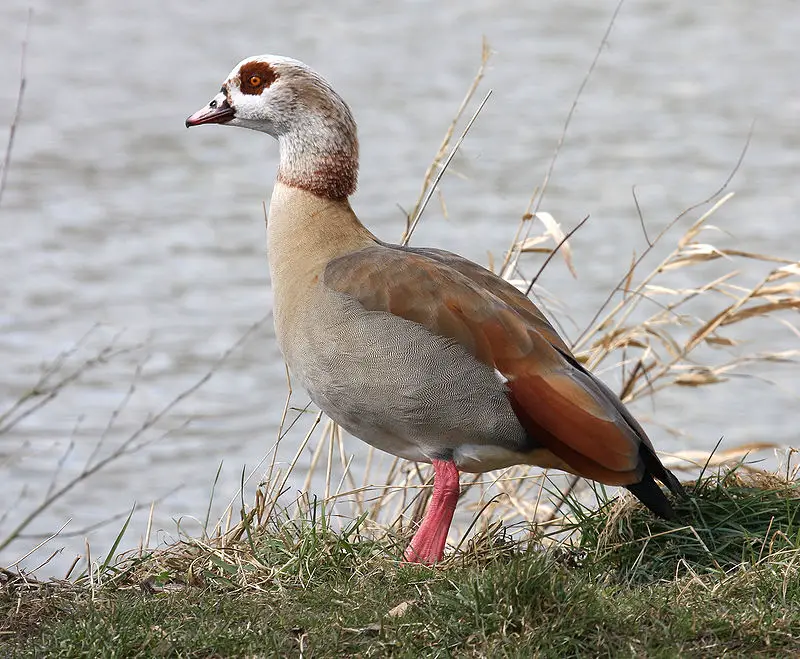
The Egyptian goose is a beautiful bird from the Anatidae family native to Africa. It has long been revered by the Ancient Egyptians, who depicted it in much of their artwork.
Today, these geese are kept as ornamental birds and commonly escape into the wild, resulting in an abundance of feral populations across southern Sahara and Nile Valley regions.
With its grayish-brown body featuring white patches around its neck and tail feathers that range from dark brown to bluish-grey coloration.
This species stands out amongst other waterfowls with its striking appearance which also features bold orange eyes surrounded by blue eye rings – quite remarkable.
As they swim along rivers or roam grasslands searching for food such as grains, fruits & vegetables; they make great additions to both aviary collections or natural habitats alike.
Scientific classification:
| Kingdom | Animalia |
| Phylum | Chordata |
| Class | Aves |
| Order | Anseriformes |
| Family | Anatidae |
| Genus | Alopochen |
| Species | A. aegyptiaca |
22. African Openbill
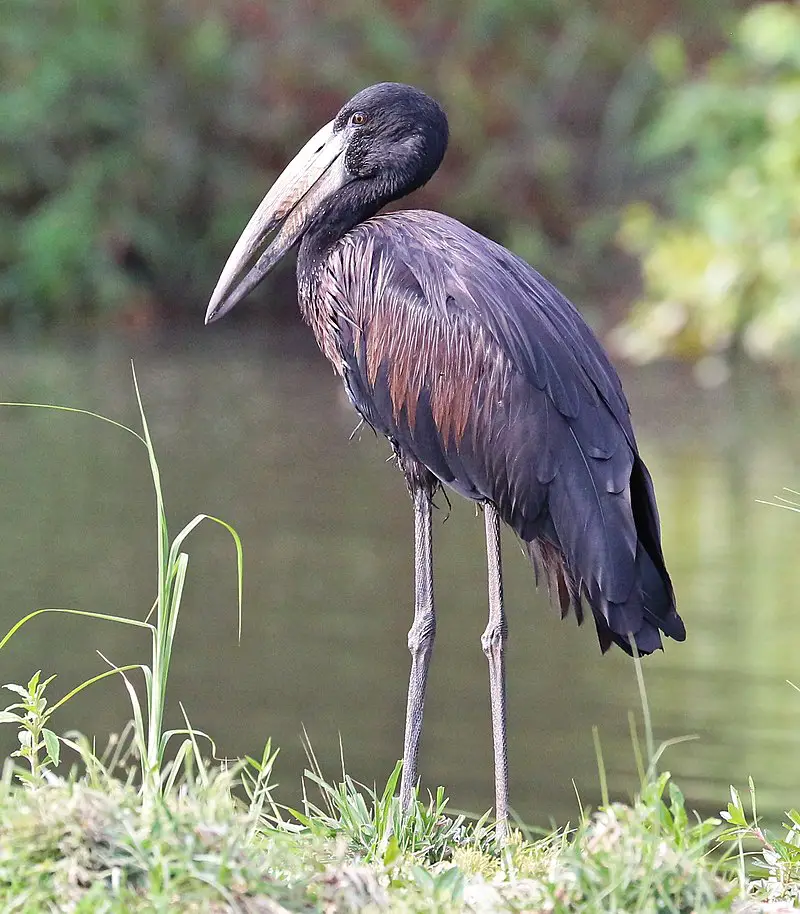
The African openbill is a species of stork found in Sub-Saharan Africa and western Madagascar.
It has a patchy distribution but is generally considered to be common or locally abundant, with two subspecies – A. l. lamelligerus on the continent and A. l. batesi in some parts of Madagascar’s west coast region.
This bird stands up to 75 cm tall and has an impressive bill that looks like it’s been cut down the middle when opened wide.
Its black feathers are contrasted by bright yellow legs, pinkish red eyes, and white wing tips which make it easily recognizable from other species of birds.
It feeds mainly on snails found amongst aquatic vegetation so can often be seen wading through shallow waters looking for food as well as perched atop trees scanning its surroundings for prey items.
Scientific classification:
| Kingdom | Animalia |
| Phylum | Chordata |
| Class | Aves |
| Order | Ciconiiformes |
| Family | Ciconiidae |
| Genus | Anastomus |
| Species | A. lamelligerus |
23. Southern Ground Hornbill
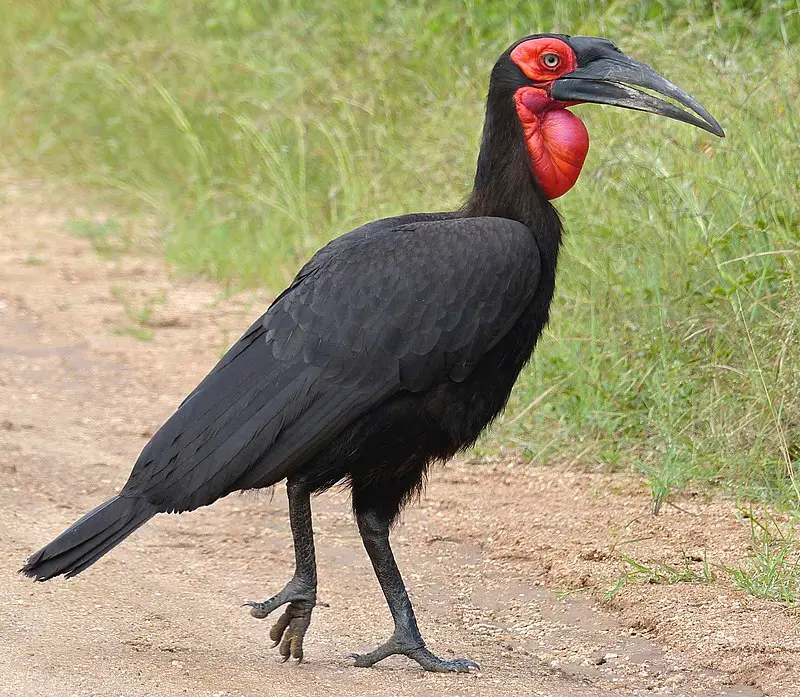
The Southern Ground Hornbill is a majestic bird, native to the southern regions of Africa such as Kenya and South Africa. It inhabits both woodlands and savannas where it can be found in abundance.
These birds are quite large, making them the largest species within their order worldwide. They have striking black feathers with red patches on their neck and wings which make for an impressive sight when taking flight.
A unique feature of these birds is that they form long-term pairs or family groups; usually consisting of two adults plus several helper offspring from previous years who assist in raising new young chicks together.
This amazing creature’s powerful presence remains unchanged throughout its range – reminding us why conservation efforts must persist if we want this incredible bird to remain part of our planet’s diverse wildlife heritage for centuries to come.
Scientific classification:
| Kingdom | Animalia |
| Phylum | Chordata |
| Class | Aves |
| Order | Bucerotiformes |
| Family | Bucorvidae |
| Genus | Bucorvus |
| Species | B. leadbeateri |
Also Featured In: Savanna Birds You Need to See,
24. Yellow-Billed Stork
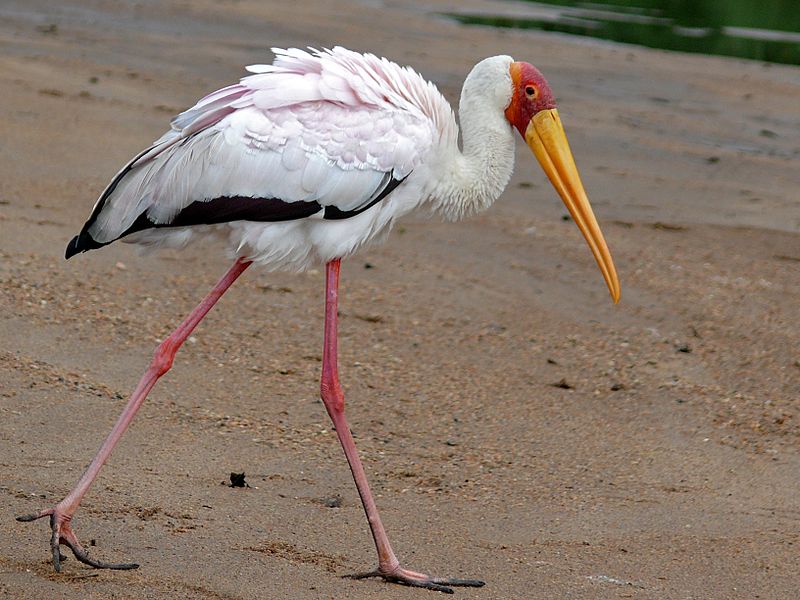
The yellow-billed stork is a large wading bird found in Africa south of the Sahara as well as Madagascar.
It belongs to the family Ciconiidae and has three other species in its genus – Mycteria americana, Mycteria cinerea and Leptoptilos javanicus.
This majestic bird stands at an average height of up to 1 meter with a wingspan that can reach 2 meters wide.
Its plumage is predominantly white with black flight feathers that contrast against its bright yellow bill for which it is named after.
The Yellow-billed Stork feeds on fish, frogs, insects and small reptiles like snakes by probing deep into mud or shallow water bodies using its long beak.
These captivating birds are also known to form colonies during their nesting season from August until October where they build nests out of sticks atop tall trees near wetlands or riversides.
Scientific classification:
| Kingdom | Animalia |
| Phylum | Chordata |
| Class | Aves |
| Order | Ciconiiformes |
| Family | Ciconiidae |
| Genus | Mycteria |
| Species | M. ibis |
25. Hartlaub’s Turaco
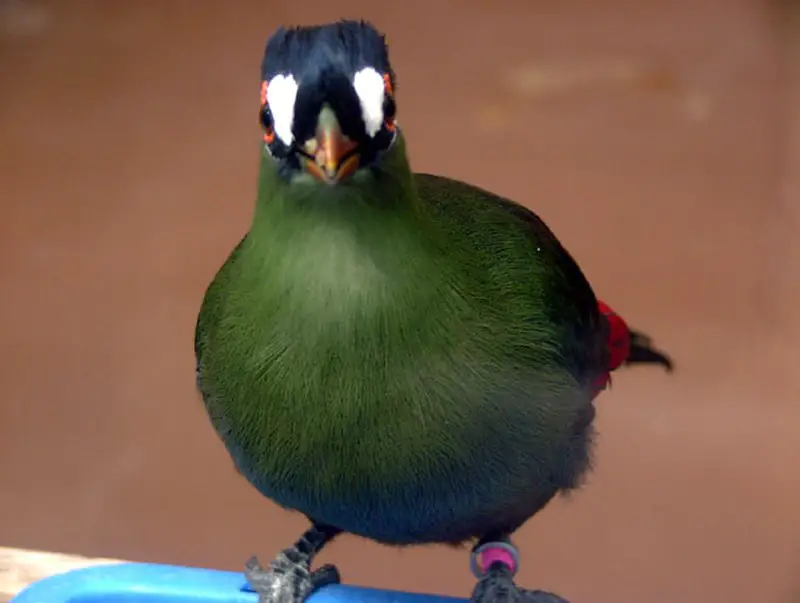
Hartlaub’s turaco is a species of bird with vibrant green and yellow feathers native to Kenya, Tanzania, and Uganda. It was named after the German physician Gustav Hartlaub for his contributions in ornithology.
This bird has strong feet which help them climb trees easily as they mainly feed on fruits found there. They are also known to eat insects like caterpillars as an occasional snack.
These birds usually build nests inside hollows or tree crevices away from predators where they lay their eggs that hatch into chicks around 15 days later.
Apart from being beautiful creatures, these birds play an important role in ecology by helping spread seeds through their droppings while feeding on fruits so the forests can be replenished over time.
Scientific classification:
| Kingdom | Animalia |
| Phylum | Chordata |
| Class | Aves |
| Order | Musophagiformes |
| Family | Musophagidae |
| Genus | Tauraco |
| Species | T. hartlaubi |
26. Vulturine Guineafowl
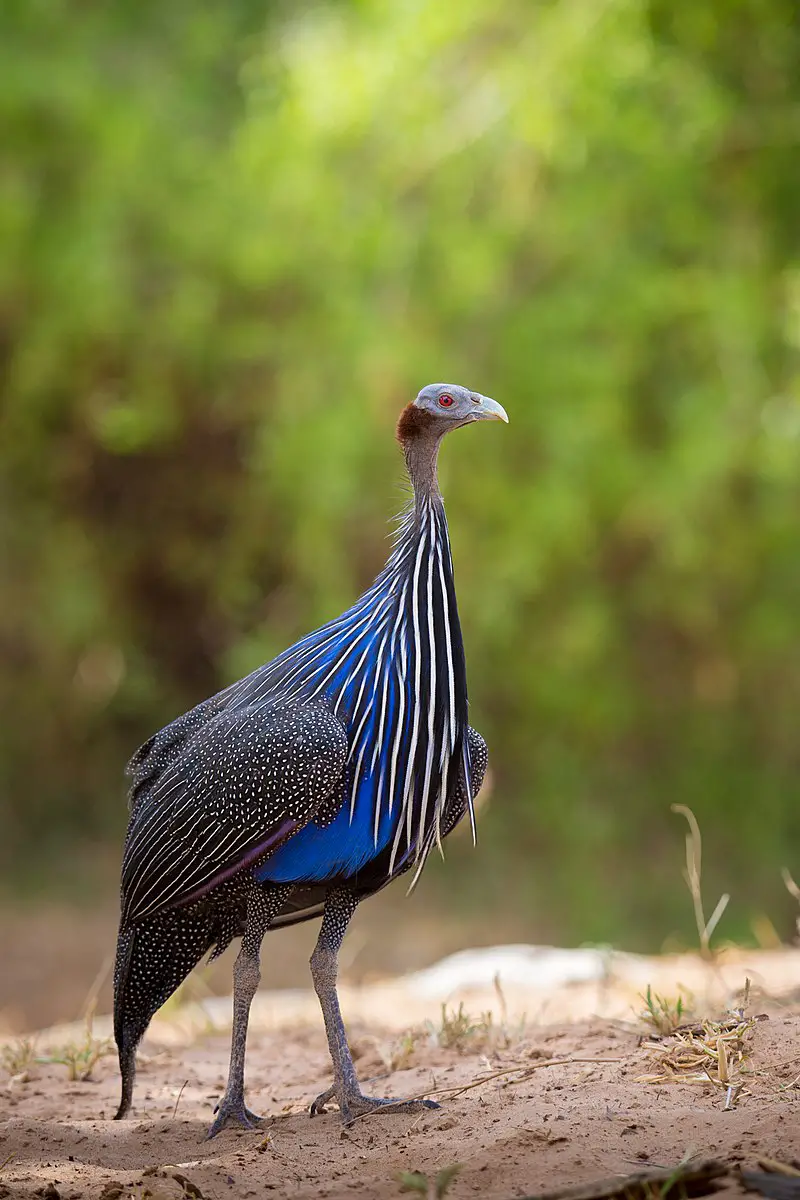
The Vulturine guineafowl is the largest species of existing guineafowl, and it belongs to the family Numididae.
It has a distant relationship with other genera belonging to its group; closest living relative being white breasted guinea-fowl which inhabit central African primary forests.
This bird is native in northern Kenya and Ethiopia but can also be found in Zimbabwe and South Sudan as well.
Its body length ranges from 70-90 cm (27–35 inches) while its wingspan measures up to 100cm (39 inches).
The vulture like appearance gives this bird its name ‘Vulturine’. Males have bright blue heads, red wattles & spiky feathers on their neck whereas females are duller brownish grey with some black streaks.
These birds feed mainly on insects such as ants, grasshoppers etc., seed grains & fruits too make part of their diet.
Scientific classification:
| Kingdom | Animalia |
| Phylum | Chordata |
| Class | Aves |
| Order | Galliformes |
| Family | Numididae |
| Genus | Acryllium G.R. Gray, 1840 |
| Species | A. vulturinum |
27. Abdim’s Stork
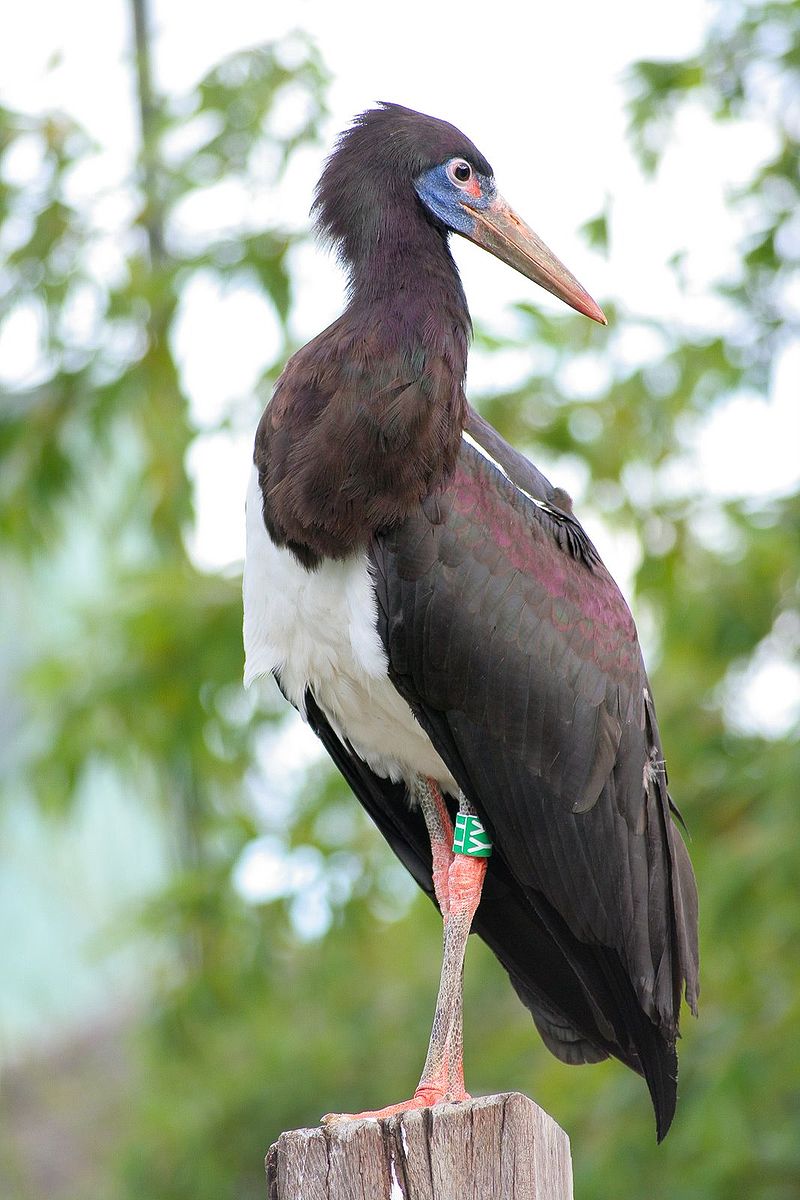
Abdim’s stork is a small species of white-bellied bird belonging to the family Ciconiidae. It can be found in many open habitats throughout Sub-Saharan Africa and Yemen, primarily feeding on insects.
The name Abdim’s Stork commemorates the Turkish Governor of Wadi Halfa in Sudan, Bey El-Arnaut Abdim (1780–1827).
This beautiful bird has striking black plumage with contrasting white underparts and red facial wattles.
Its long legs are pinkish grey while its bill is yellowish green at the base but quickly darkens towards its tip. A distinctive feature of this species is their very short tails compared to other storks from similar regions.
They have even been seen flapping their wings rapidly as if hovering above water sources for food or simply enjoying flight.
Scientific classification:
| Kingdom | Animalia |
| Phylum | Chordata |
| Class | Aves |
| Order | Ciconiiformes |
| Family | Ciconiidae |
| Genus | Ciconia |
| Species | C. abdimii |
28. Marabou Stork
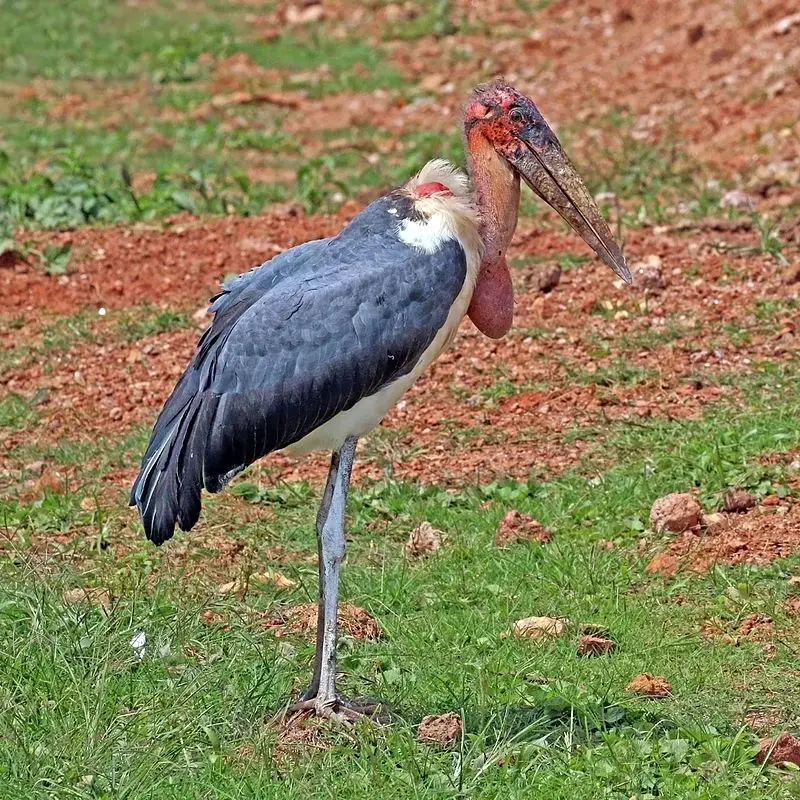
The marabou stork is a large wading bird native to sub-Saharan Africa. It has an unmistakable appearance, with cloak-like wings and back, skinny white legs and sometimes a large mass of “hair”.
They reside in both wet and arid habitats near human habitation, often found at landfill sites.
This species has earned the nickname ‘undertaker bird’ due to its unique shape viewed from behind.
Despite living alongside humans they remain elusive birds who rarely interact with us but can still be seen gliding on thermals or standing majestically by lakesides.
The marabou stork is truly an impressive sight that will stay in your memory forever.
Scientific classification:
| Kingdom | Animalia |
| Phylum | Chordata |
| Class | Aves |
| Order | Ciconiiformes |
| Family | Ciconiidae |
| Genus | Leptoptilos |
| Species | L. crumenifer |
Also Featured In: Scavengers Birds You Should Know, Large African Birds You Need to Know
29. African Grey Hornbill
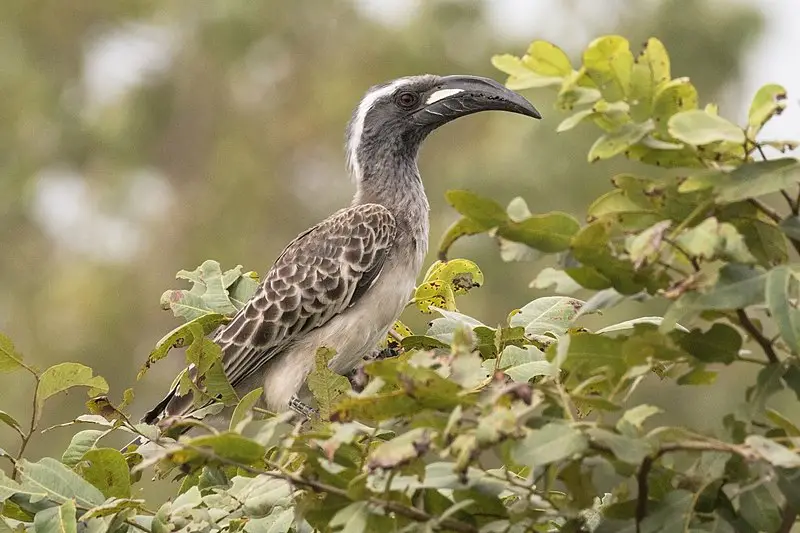
The African grey hornbill is a large bird with striking black and white plumage. Its most recognizable feature is its long, down-curved bill which has a red base and yellow tip.
They are found in sub-Saharan Africa as well as Arabia and have been known to escape or be released into Florida where they may not be breeding yet.
Their diet mainly consists of fruits, insects, small reptiles and amphibians making them important seed dispersers for their habitats.
Hornbills play an important role in the ecosystem by controlling pests like locusts while also providing food for predators such as eagles or larger cats.
These birds are often kept as pets but can become very demanding due to their intelligence so potential owners should do research before considering one of these amazing creatures.
Scientific classification:
| Kingdom | Animalia |
| Phylum | Chordata |
| Class | Aves |
| Order | Bucerotiformes |
| Family | Bucerotidae |
| Genus | Lophoceros |
| Species | L. nasutus |
30. Black-Chested Snake Eagle
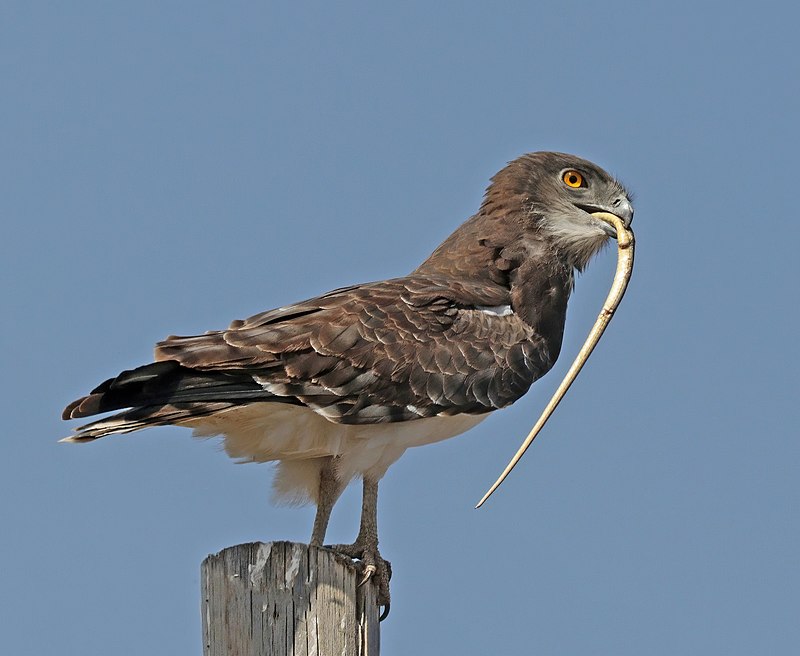
The Black-chested Snake Eagle is a large African bird of prey belonging to the Accipitridae family.
It is closely related to Short-toed and Beaudouin’s snake eagles, with many authors previously considering them all as one species.
This majestic raptor has impressive features including white head and tail feathers, black chest patch and yellow feet.
Its diet mainly consists of snakes which it hunts from high up in the air or on trees by swooping down quickly when its victim appears.
The call of this magnificent creature can be heard loud even far away, making it easy for anyone lucky enough to listen.
With careful conservation measures taken place, these rare birds are slowly recovering their population numbers across Africa – providing us with an incredible sight every now and then.
Scientific classification:
| Kingdom | Animalia |
| Phylum | Chordata |
| Class | Aves |
| Order | Accipitriformes |
| Family | Accipitridae |
| Genus | Circaetus |
| Species | C. pectoralis |
31. Black Crowned Crane
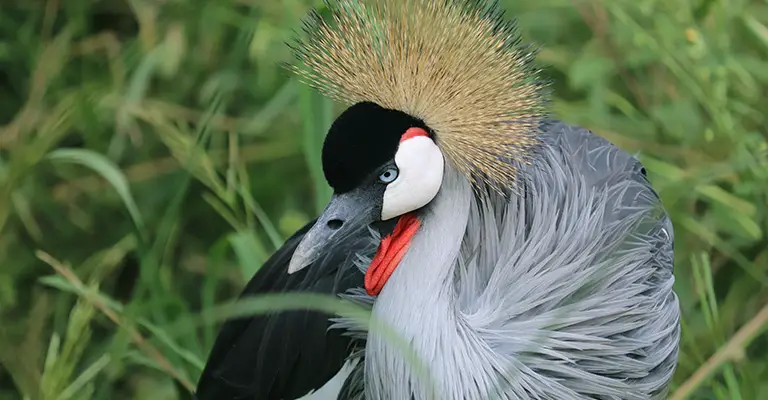
The Black crowned crane is a beautiful bird, native to sub-Saharan Africa. It has a distinctive golden crown made of bristle feathers and can be found in shallow wetlands during the wet season.
These areas act as its primary breeding, feeding and roosting sites but it also forages on grasslands.
This species relies heavily on wetlands for survival as it uses them to breed, feed, rest and even moult.
The black crowned crane plays an important role in local African folklore – with many legends surrounding this majestic creature – and is considered an emblem of good luck or prosperity by some cultures.
Its numbers are declining due to habitat destruction so conservation efforts have been implemented which aim at protecting these birds from further decline.
Scientific classification:
| Kingdom | Animalia |
| Phylum | Chordata |
| Class | Aves |
| Order | Gruiformes |
| Family | Gruidae |
| Genus | Balearica |
| Species | B. pavonina |
Also Featured In: Famous Paintings Birds,
32. White-Fronted Bee-Eater
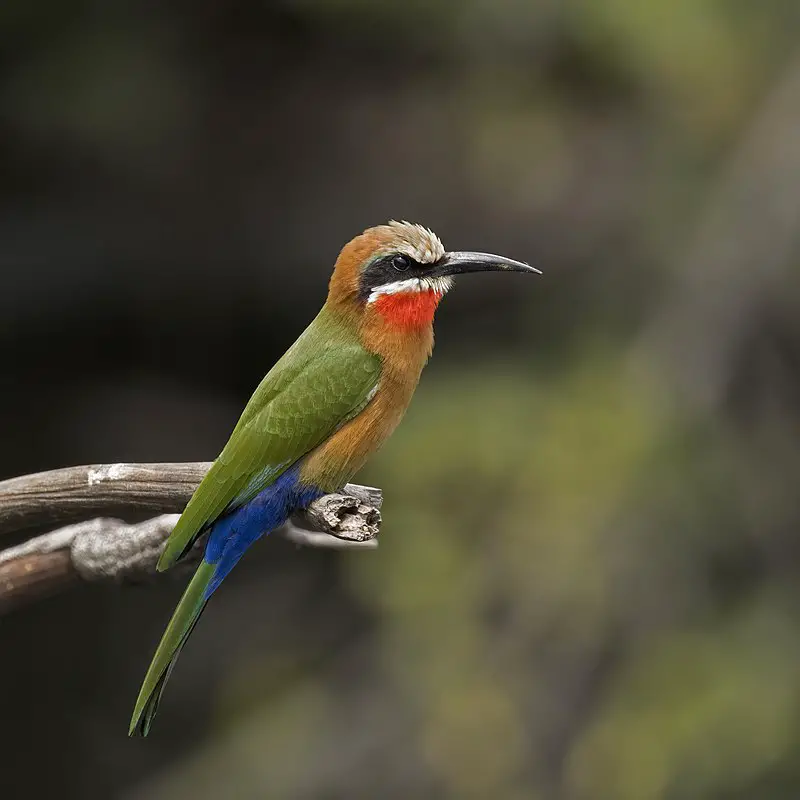
The White-fronted Bee-eater is a beautiful bird native to subequatorial Africa. It has an unmistakable white forehead, square tail and bright red throat patch that sets it apart from other species of bee eaters.
These birds typically nest in colonies by digging holes into cliffs or earthen banks near waterbodies.
During the day they can be seen perched on low trees waiting for passing insects which they swoop down upon with great agility to capture their prey midair.
They may also hover around flowers while searching for food – making them quite a sight to behold indeed.
All in all, these majestic creatures are truly fascinating to observe and make wonderful additions to any natural habitat.
Scientific classification:
| Kingdom | Animalia |
| Phylum | Chordata |
| Class | Aves |
| Order | Coraciiformes |
| Family | Meropidae |
| Genus | Merops |
| Species | M. bullockoides |
33. Senegal Coucal
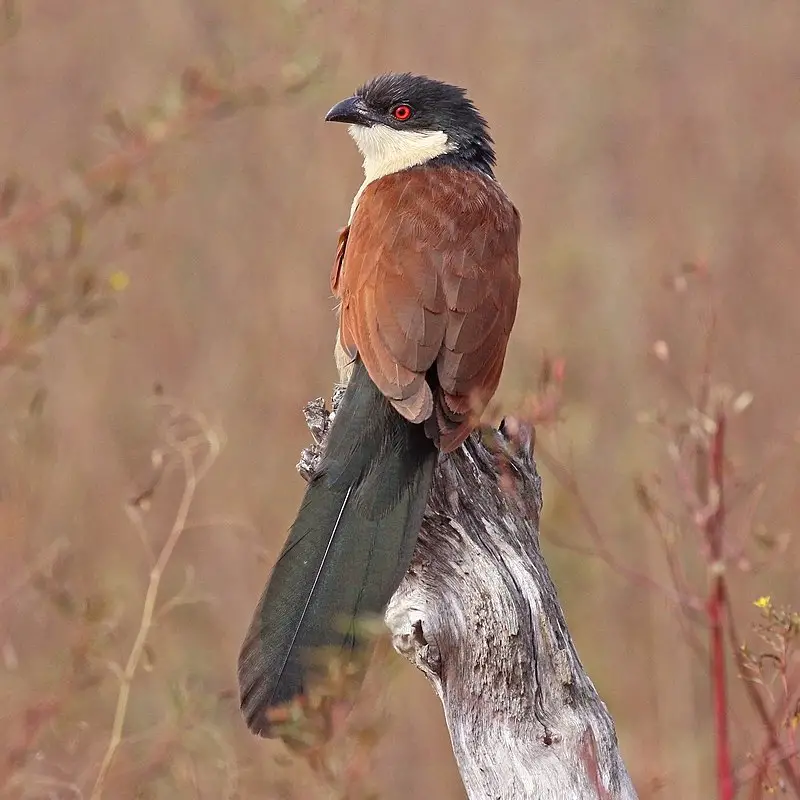
The Senegal coucal is a cuckoo-like bird native to Central and Southern Africa. It has a medium-sized body with black wings, tail and head along with white breast feathers.
Its natural habitat consists of lightly wooded savannahs where it feeds on insects, small reptiles, amphibians and fruits.
This species can be found in pairs or alone atop low bushes searching for prey or perched up high singing its distinctive song that features a mix of harsh notes as well as melodic ones.
The Senegal coucal enjoys the sun’s rays but also loves sheltering in dense vegetation when danger arises nearby.
Overall this beautiful bird makes an interesting addition to any backyard garden.
Scientific classification:
| Kingdom | Animalia |
| Phylum | Chordata |
| Class | Aves |
| Order | Cuculiformes |
| Family | Cuculidae |
| Genus | Centropus |
| Species | C. senegalensis |
Also Featured In: Birds that Live in Benin,
34. Eastern Plantain-Eater
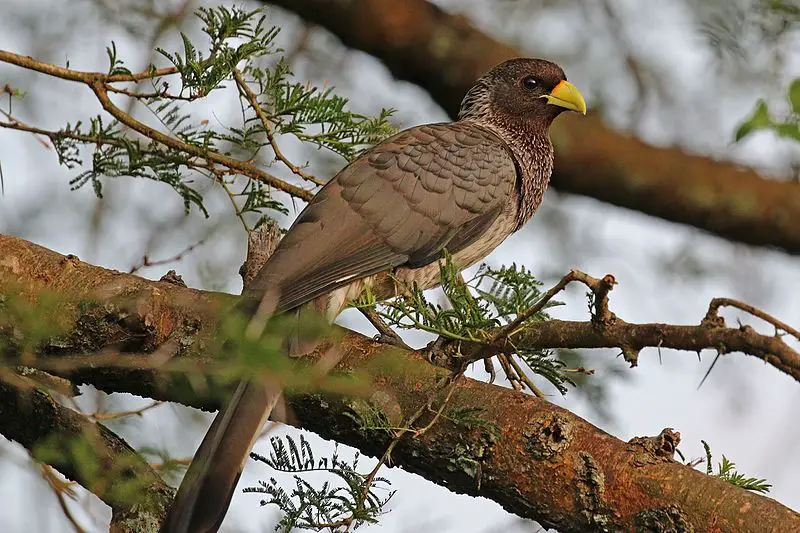
The Eastern Plantain-eater is a large member of the Turaco family, found in open woodland habitats throughout tropical east Africa.
They are common and noisy birds, making them easy to spot due their bright plumage and lively behaviour.
With long wings and tail feathers they have impressive flying abilities which can be seen when moving from tree to tree.
Nesting high up on trees these birds build platform nests made out of twigs for laying two or three eggs at a time.
The diet mainly consists of fruit such as plantains but also includes insects during breeding season when young need protein rich food sources for healthy development into adulthood.
Scientific classification:
| Kingdom | Animalia |
| Phylum | Chordata |
| Class | Aves |
| Order | Musophagiformes |
| Family | Musophagidae |
| Genus | Crinifer |
| Species | C. zonurus |
Also Featured In: Large Birds of Uganda,
35. Mangrove Kingfisher
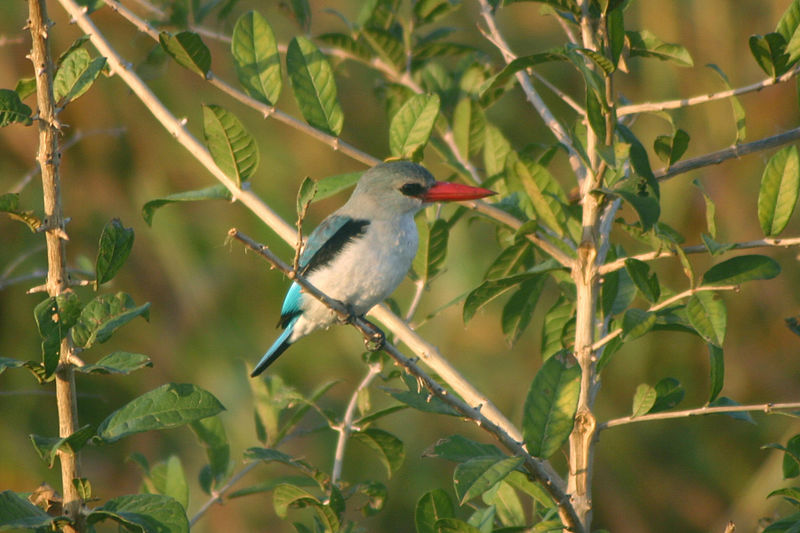
The Mangrove Kingfisher (Halcyon senegaloides) is a colorful bird found along the eastern coast of Sub-Saharan Africa.
Its appearance resembles that of the woodland kingfisher, sporting distinctive black and white stripes on its wings.
This species prefers to live in mangroves, riverside forests, and estuaries. The IUCN has listed it as being of least concern due to its broad range across Eastern Africa and stable population numbers.
It was first described by French naturalist Louis Jean Pierre Vieillot in 1817 from Senegal specimens he collected during his travels there with an expeditionary force led by General Charles Leclerc between 1802–1803 while they were en route to Haiti.
The Mangrove Kingfisher feeds mainly on small fish caught in shallow waters or insects gleaned from low vegetation near water bodies; making it both indispensable for maintaining healthy aquatic ecosystems but also entertainingly fun to watch.
Scientific classification:
| Kingdom | Animalia |
| Phylum | Chordata |
| Class | Aves |
| Order | Coraciiformes |
| Family | Alcedinidae |
| Subfamily | Halcyoninae |
| Genus | Halcyon |
| Species | H. senegaloides |
36. Hemprich’s Hornbill
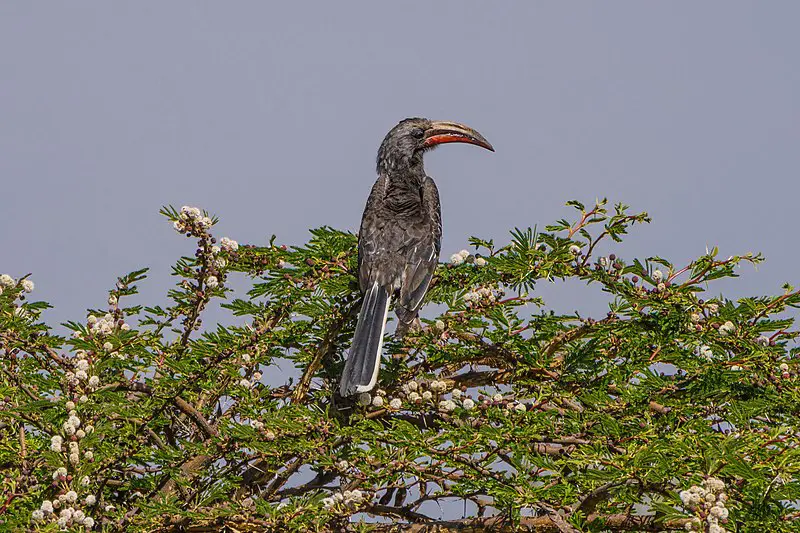
Hemprich’s hornbill is a beautiful bird found in various parts of Africa. It has an impressive black and white plumage that really stands out, especially its large yellow bill with the distinctive casque atop.
These birds live near cliffs, gorges or water bodies such as bushland, scrubland and dense secondary forests. They are omnivores who feed on fruits, insects and small vertebrates like lizards or rodents.
The females build their nest inside tree hollows where they lay between two to four eggs each year which she incubates while her mate brings food for her.
This species of Hornbill is threatened due to habitat loss caused by human activities like deforestation but conservation efforts are underway to protect them from extinction.
Scientific classification:
| Kingdom | Animalia |
| Phylum | Chordata |
| Class | Aves |
| Order | Bucerotiformes |
| Family | Bucerotidae |
| Genus | Lophoceros |
| Species | L. hemprichii |
37. Blue-Headed Coucal
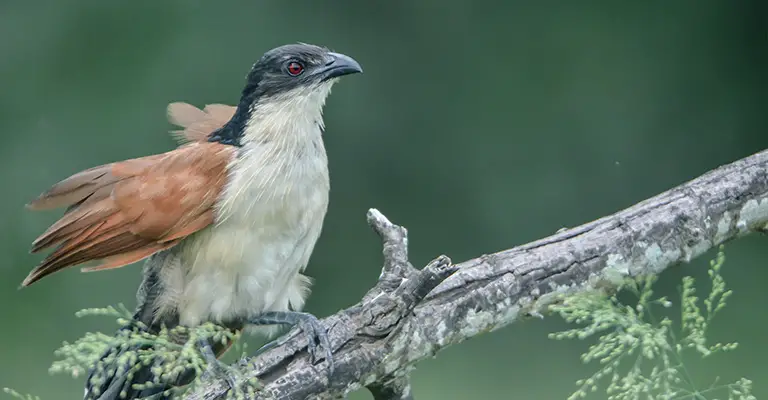
The Blue-headed coucal is a beautiful and unique species of cuckoo found in tropical central Africa. It inhabits areas near swamps, rivers, forests edges and other wet environments.
This bird is quite common with a large range which has led the IUCN to rate its conservation status as “least concern”.
Its distinguishing feature are its striking blue head feathers that it uses for courtship displays when searching for mates during breeding season.
The diet consists mainly of insects but can also include small reptiles or amphibians if available.
Despite their wide range they remain vulnerable due to changes in land use such as deforestation or agricultural development so careful monitoring must continue to ensure the survival of this charming species.
Scientific classification:
| Kingdom | Animalia |
| Phylum | Chordata |
| Class | Aves |
| Order | Cuculiformes |
| Family | Cuculidae |
| Genus | Centropus |
| Species | C. monachus |
Also Featured In: Birds that Live in lake Mburo National Park,
38. Lesser Cuckoo
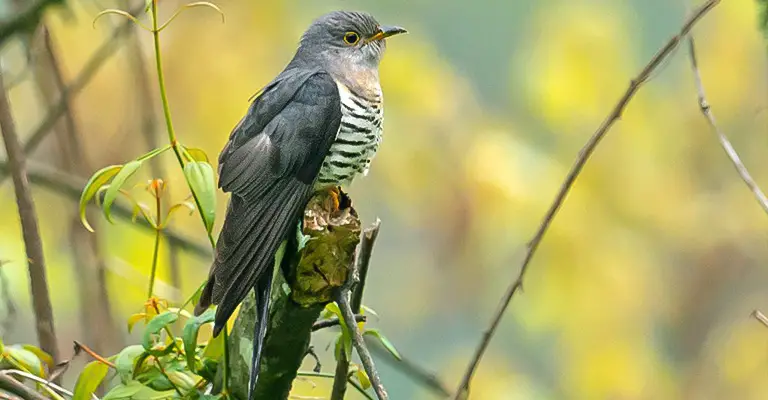
The lesser cuckoo is a species of bird found in many parts of the world, including Bangladesh, Bhutan and China. It belongs to the Cuculidae family which also includes other types of cuckoos.
The lesser cuckoo has a brown back with black wings and tail feathers that have white tips. Its breast is pale grey while its belly is whitish-gray or buffy yellow.
In Japan it’s called hoso-daka due to its loud call similar to ‘ho’ or ‘so’ sound repeated several times during breeding season as part of mating ritual between males and females pairs.
This peculiar behavior can be observed when they fly from tree branches into open ground seeking for food such as insects, spiders and small reptiles like lizards which are their main diet components along with some berries occasionally eaten too.
They build nests out of twigs on trees located close by water bodies where they lay eggs up to 5 – 6 per clutch depending on time each year .
All these features make them an interesting addition into any wildlife ecosystem.
Scientific classification:
| Kingdom | Animalia |
| Phylum | Chordata |
| Class | Aves |
| Order | Cuculiformes |
| Family | Cuculidae |
| Genus | Cuculus |
| Species | C. poliocephalus |
39. Madagascar Cuckoo
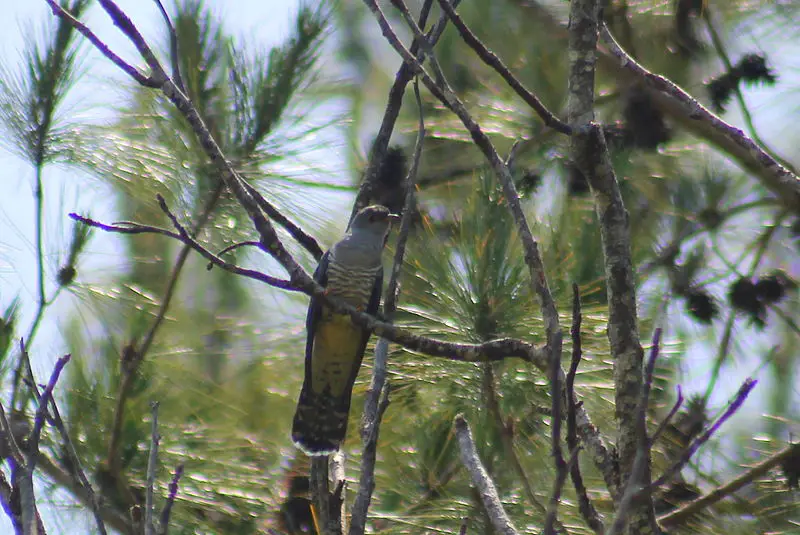
The Madagascar cuckoo, also known as the ‘Madagascar Lesser Cuckoo’ is a species of bird found in the family Cuculidae.
It breeds only on the island of Madagascar but spends its non-breeding season across several countries such African Great Lakes region and Indian Ocean islands including Burundi, Democratic Republic of Congo, Malawi, Rwanda , South Africa, Uganda and Zambia.
This small to medium sized bird has red eyes with a black bill.
Its upperparts are greyish brown while underparts are pale buff or white that gets darker towards lower abdomen area.
It feeds mainly on insects like caterpillars which it captures by gleaning from foliage or hovering over them before pouncing at them from above.
Scientific classification:
| Kingdom | Animalia |
| Phylum | Chordata |
| Class | Aves |
| Order | Cuculiformes |
| Family | Cuculidae |
| Genus | Cuculus |
| Species | C. rochii |
40. White-Winged Collared Dove
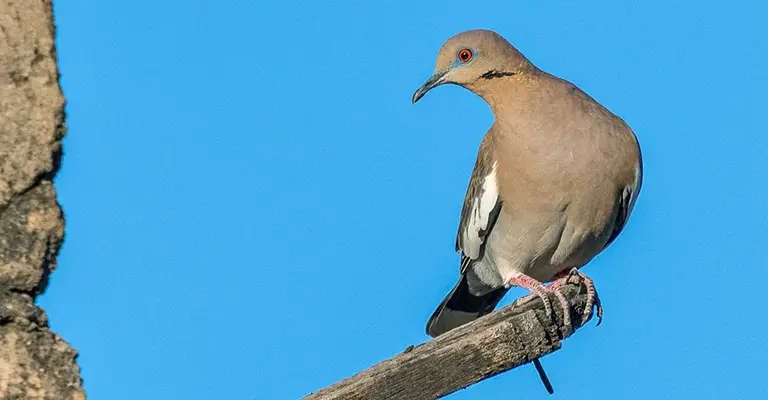
The white-winged collared dove is a species of bird from the family Columbidae found in Ethiopia, Kenya and Somalia. It has beautiful white wings with black stripes that contrast against its brownish gray body giving it an elegant appearance.
The birds usually live in subtropical or tropical moist lowland forests, dry shrublands and plantations but have been seen to inhabit urban areas as well. Unfortunately their habitats are under threat due to human activities such as deforestation which put them at risk of extinction.
Conservation efforts must be taken so these wonderful creatures can continue living peacefully amongst us for many years to come.
Scientific classification:
| Kingdom | Animalia |
| Phylum | Chordata |
| Class | Aves |
| Order | Columbiformes |
| Family | Columbidae |
| Genus | Streptopelia |
| Species | S. reichenowi |
41. Bruce’s Green Pigeon
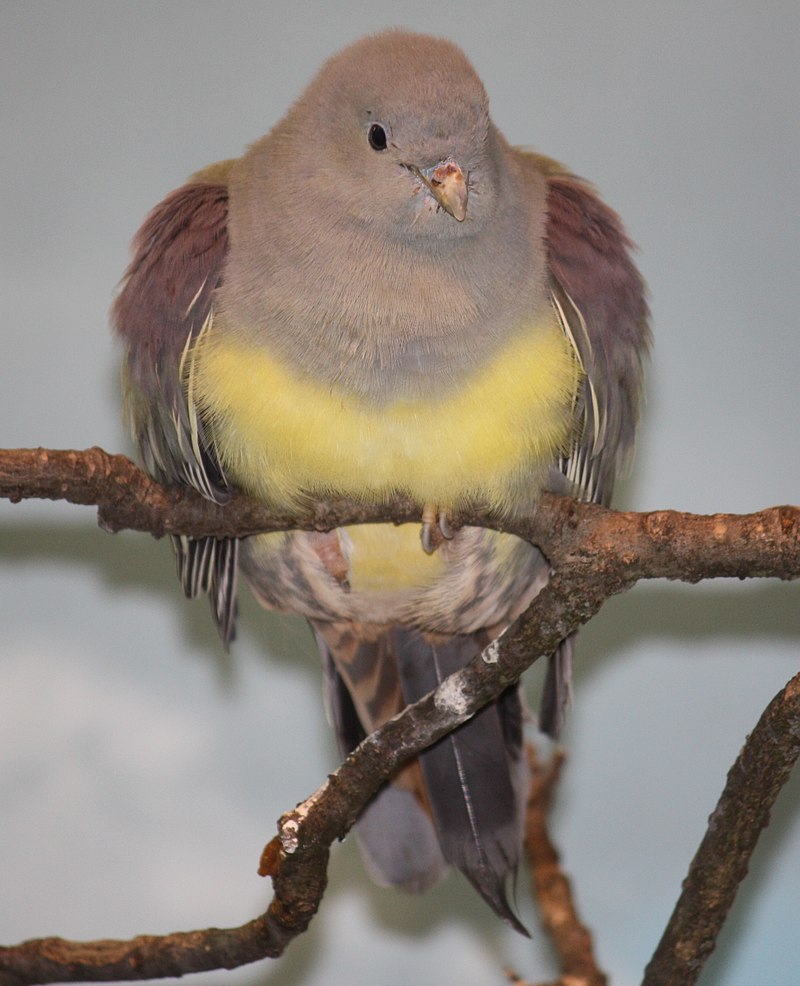
Bruce’s green pigeon is a species of bird in the Columbidae family, and can be found across Africa and some parts of the Middle East.
It has light grey plumage on its head, neck and chest area with darker wings that have white tips.
The most distinguishing feature of this bird is its bright yellow belly which stands out against its otherwise dull colouring.
Its diet mainly consists of fruits such as figs, dates or olives but it will also feed on buds or flowers when necessary.
Bruce’s green pigeons are usually seen alone or in pairs but may congregate in groups to forage together when food sources are plentiful.
They make their nests high up in trees where they lay two eggs at a time which both parents take turns incubating until hatching takes place after an 18 day period.
Scientific classification:
| Kingdom | Animalia |
| Phylum | Chordata |
| Class | Aves |
| Order | Columbiformes |
| Family | Columbidae |
| Genus | Treron |
| Species | T. waalia |
42. Blue-Spotted Wood Dove

The blue-spotted wood dove is a species of bird belonging to the Columbidae family. It can be found abundantly throughout Africa south of the Sahel, part of East Africa and absent in Southern Africa.
The French zoologist Mathurin Jacques Brisson first documented this species back in 1760, based off a specimen collected from Senegal.
This small sized dove has white underparts with greyish edges and its upper parts are marked by black spots on darker plumage with purplish hues.
Blue spotting is seen near their tail feathers giving them their name ‘Blue spotted wood doves’ These birds feed mainly on fruits often taken directly from trees as they lack strong claws needed for climbing or perching onto branches unlike other members of its family that have adapted better at clinging onto branches while feeding .
Scientific classification:
| Kingdom | Animalia |
| Phylum | Chordata |
| Class | Aves |
| Order | Columbiformes |
| Family | Columbidae |
| Genus | Turtur |
| Species | T. afer |
43. Blue-Headed Bee-Eater
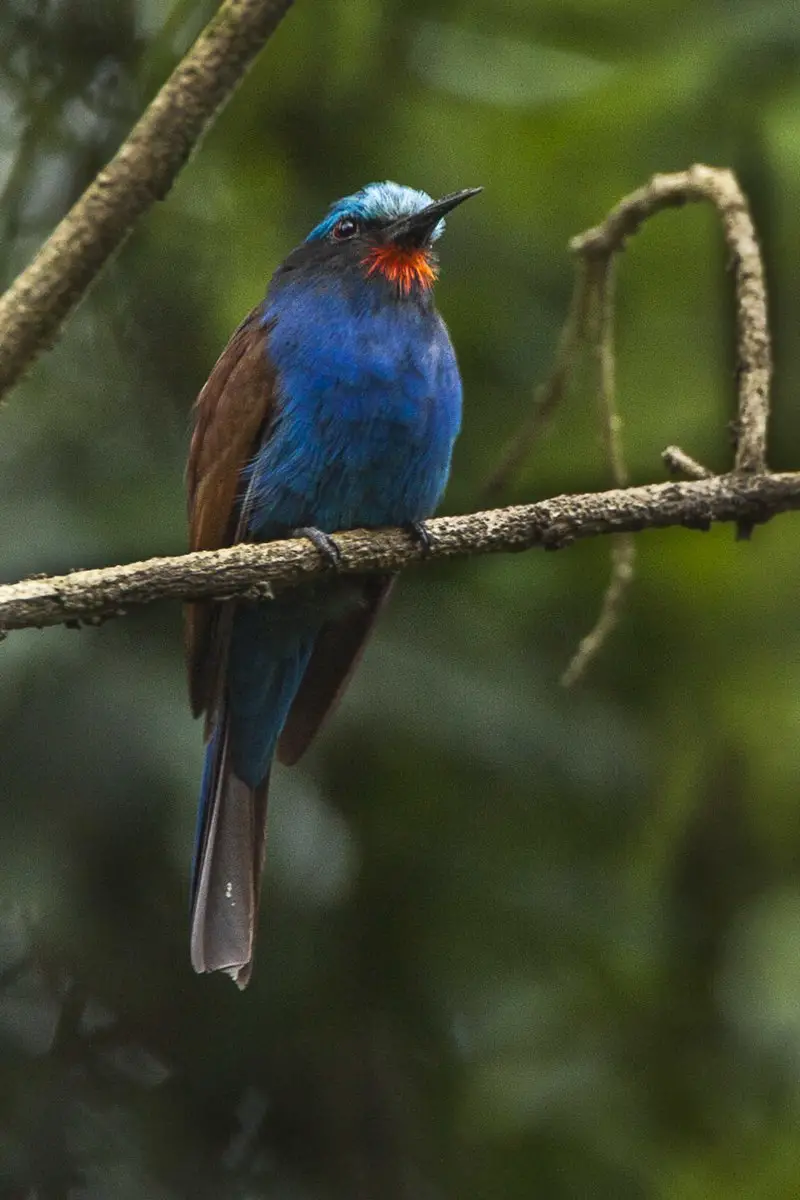
The Blue-headed Bee-eater is a beautiful species of bird found in tropical West and Central Africa. Its overall length measures up to 19 cm, with its back and wings being mainly blueish green.
The head has an orange crown which fades into yellow on the cheeks, forehead, chin and throat. It also has two distinct black stripes that run from the eyes down to the nape of its neck.
The bee-eater feeds primarily on flying insects such as bees, wasps and dragonflies; it catches them by hovering near branches or in midair before swooping downward for capture.
This species is highly social and typically nests in colonies containing dozens of individuals.
As they are monogamous birds they usually form pair bonds during breeding season while feeding their young together with beak gaping begging displays until fledging occurs after several weeks later.
All in all this magnificent avian creature provides us with great pleasure when watching them flutter through our forests.
Scientific classification:
| Kingdom | Animalia |
| Phylum | Chordata |
| Class | Aves |
| Order | Coraciiformes |
| Family | Meropidae |
| Genus | Merops |
| Species | M. muelleri |
44. Blue-Breasted Bee-Eater
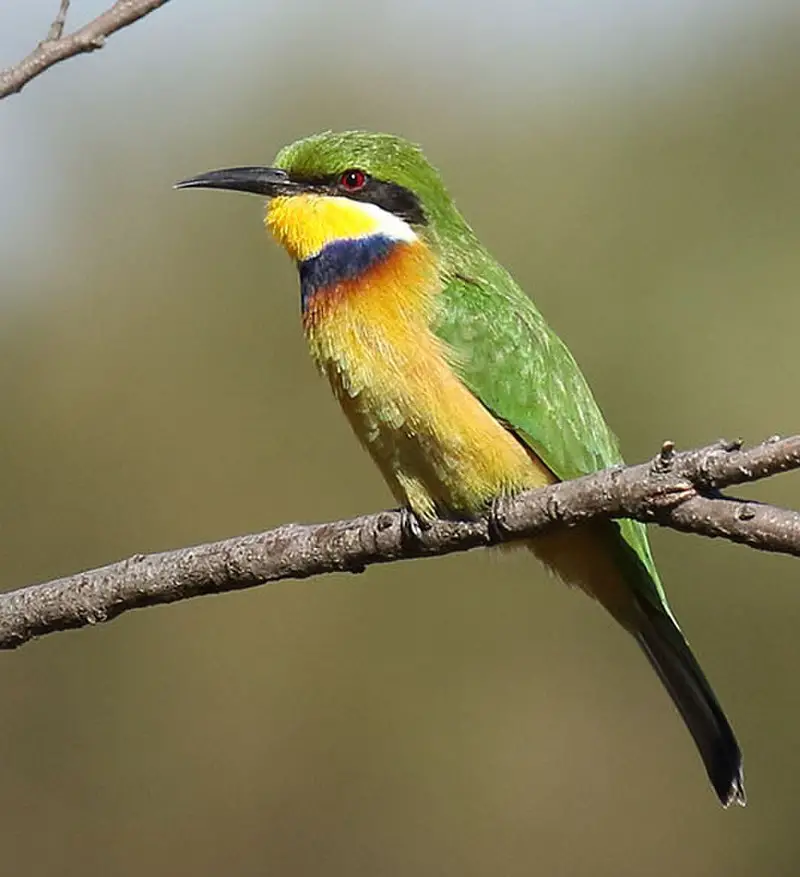
The Blue-breasted Bee-eater (Merops variegatus) is a truly magnificent species of bird found in Central Africa. It belongs to the family Meropidae, which also includes other visually similar birds with specialized diets consisting mainly of Hymenopterans.
This fascinating bird has bright plumage and stands out among its peers due to its large head, short neck and long curved slender beak that allow it to feed on bees and other insects.
Its wings are well developed for strong flight capabilities while its tail helps maintain balance during high speed chases after prey.
The blue-breasted bee-eater is an incredibly beautiful species worth protecting as they play an important role in their natural environment by controlling insect populations.
Scientific classification:
| Kingdom | Animalia |
| Phylum | Chordata |
| Class | Aves |
| Order | Coraciiformes |
| Family | Meropidae |
| Genus | Merops |
| Species | M. variegatus |
45. Fischer’s Turaco
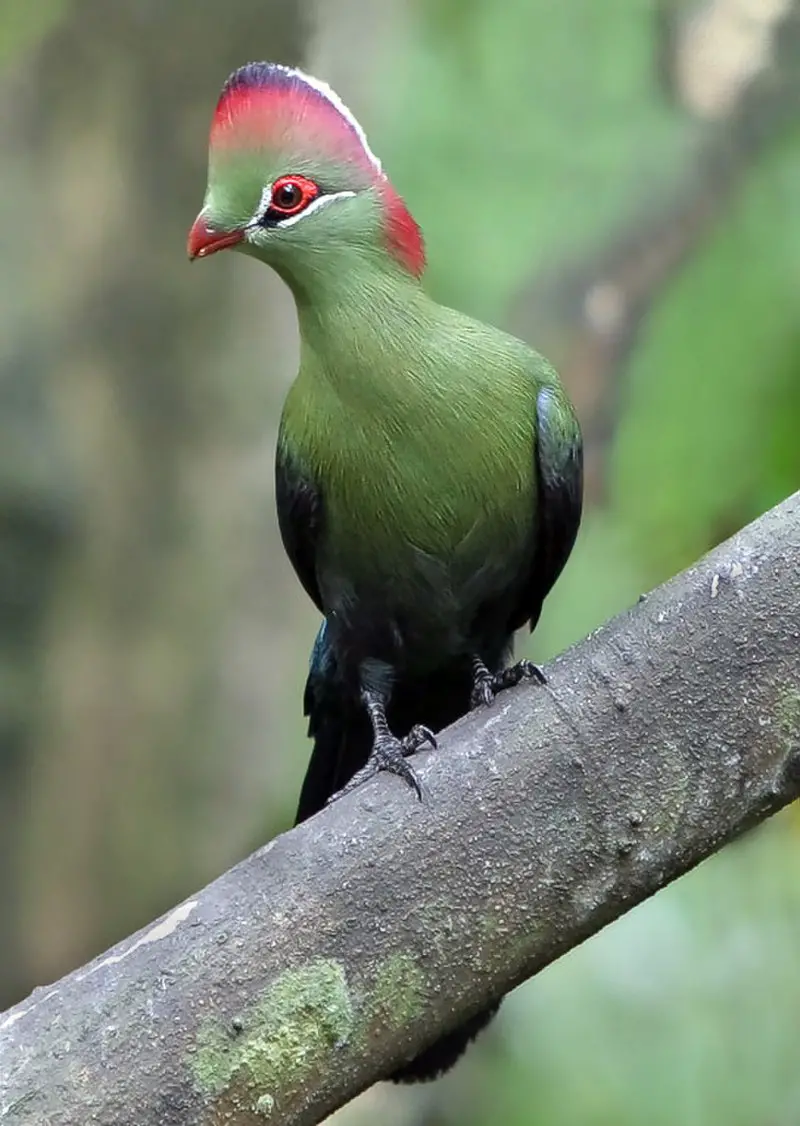
Fischer’s turaco is a beautiful species of bird found in East Africa. It lives in moist lowland and montane forests as well as arable land. Unfortunately, this species is threatened due to habitat loss and trapping for the wildlife trade.
The male Fischer’s Turaco has bright green feathers with blue wings and tail while the female has duller colors, making it easy to identify them apart. This bird also has red eyes which are unique among other birds of its kind.
They feed mainly on fruits from trees or shrubs along with small insects like grasshoppers, beetles, moths etc .
Their diet varies depending on what’s available at any given time but they remain mostly frugivorous throughout their life cycle. With proper conservation efforts we can ensure that these amazing creatures continue to thrive in their natural habitats for years to come.
Scientific classification:
| Kingdom | Animalia |
| Phylum | Chordata |
| Class | Aves |
| Order | Musophagiformes |
| Family | Musophagidae |
| Genus | Tauraco |
| Species | T. fischeri |
46. Purple-Crested Turaco
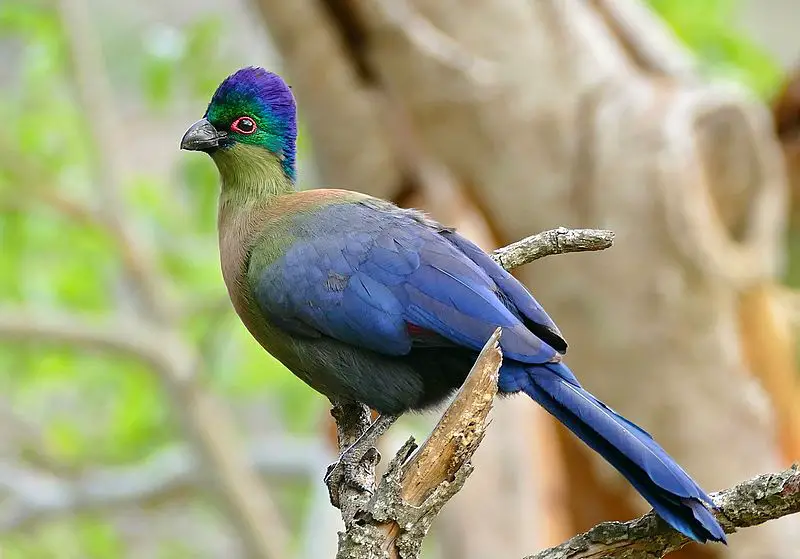
The Purple-crested turaco is a beautiful bird found in African countries like South Africa. It has striking plumage, with its head and crest being bright purple or blue-ish green.
Its wings, back, and tail are black while the underside of its body is white to cream colored. The bill of this species is yellow and it also has red eyes which stand out against its feathers.
This species prefers woodlands and habitats near streams or rivers where they can find plenty of food such as fruit, leaves, buds and nectar from flowers.
They often congregate in flocks when looking for food either on high branches or close to ground level within their habitat range areas across southern Africa’s woodland regions making them easily visible by observers whilst searching for these feathered beauties.
Scientific classification:
| Kingdom | Animalia |
| Phylum | Chordata |
| Class | Aves |
| Order | Musophagiformes |
| Family | Musophagidae |
| Genus | Gallirex |
| Species | G. porphyreolophus |
Also Featured In: Magenta Birds You Didn’t Know, Birds of KwaZulu-Natal
47. Schalow’s Turaco
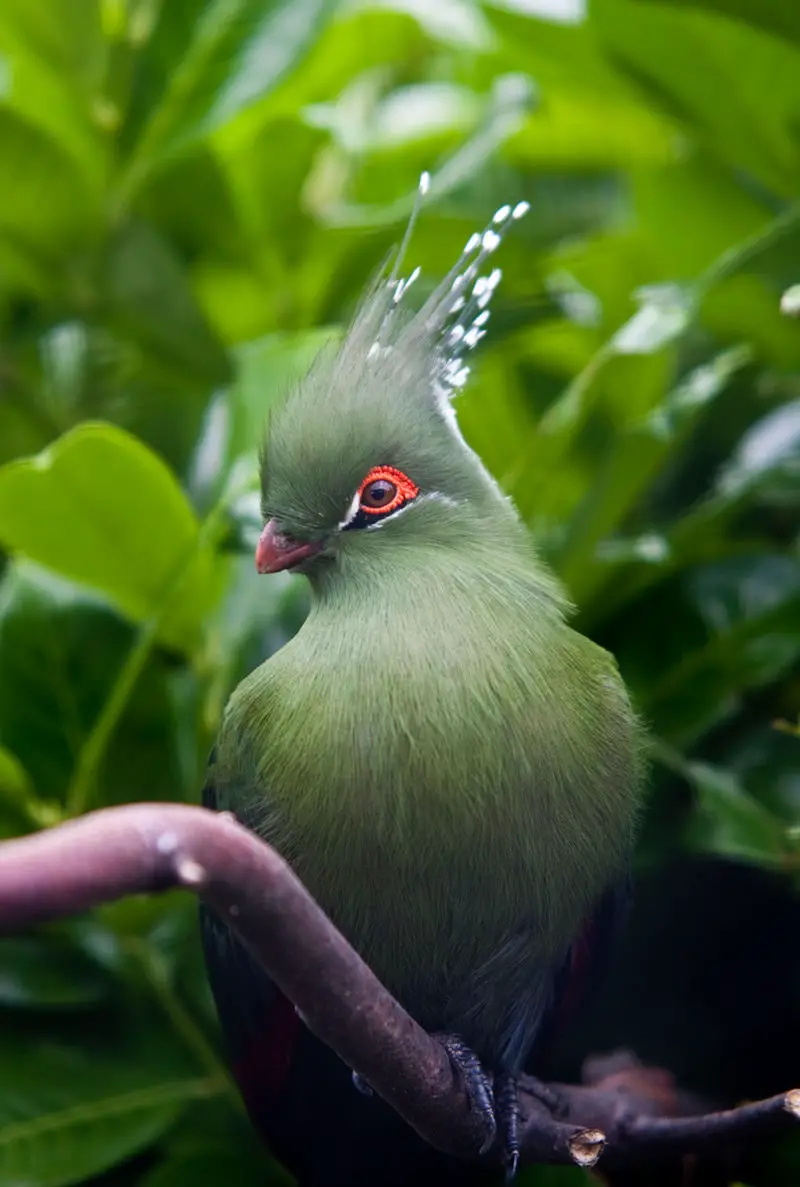
Schalow’s turaco is a vibrant, medium-sized bird native to the western part of Central Africa. Named after German banker and ornithologist Herman Schalow, these birds are renowned for their coppery-jade green plumage which fades into a deep iridescent blue towards the tail.
They’re light for their species, usually weighing around 270g with lengths ranging from 15 to 17 inches. These frugivorous birds mainly feed on fruits like figs and berries as well as flowers and insects in some cases.
In addition to being colorful creatures, they have bright yellow eyes that contrast beautifully with its feathers.
Although not common in aviculture due to difficulties breeding them in captivity (as little is known about this species), they can still be found living wild throughout Cameroon, Gabon and Equatorial Guinea – making them quite an interesting sight if you’re lucky enough to spot one.
Scientific classification:
| Kingdom | Animalia |
| Phylum | Chordata |
| Class | Aves |
| Order | Musophagiformes |
| Family | Musophagidae |
| Genus | Tauraco |
| Species | T. schalowi |
48. Red-Knobbed Coot
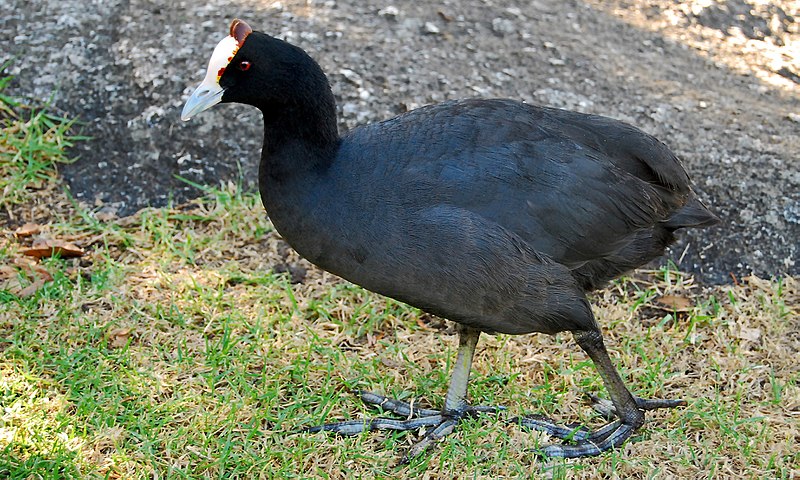
The Red-knobbed Coot is a species of rail and crake bird belonging to the Rallidae family. It is mostly found in Africa with presence in parts of southern Spain, breeding around freshwater lakes and ponds.
They build their nest from dead reeds near water’s edge or on floating platforms, laying about seven eggs but can lay more depending on environmental factors.
It was formally described by Italian ornithologist Giovanni Antonio Scopoli in 1786 as Fulica cristata which translates to “crested coot” due its distinctive red knob located above the bill that it uses for display purposes during courtship rituals.
The Red-knobbed Coot has a black body with white beak and feet, making them quite easy to spot amongst other birds native to similar habitats.
Scientific classification:
| Kingdom | Animalia |
| Phylum | Chordata |
| Class | Aves |
| Order | Gruiformes |
| Family | Rallidae |
| Genus | Fulica |
| Species | F. cristata |
49. Half-Collared Kingfisher
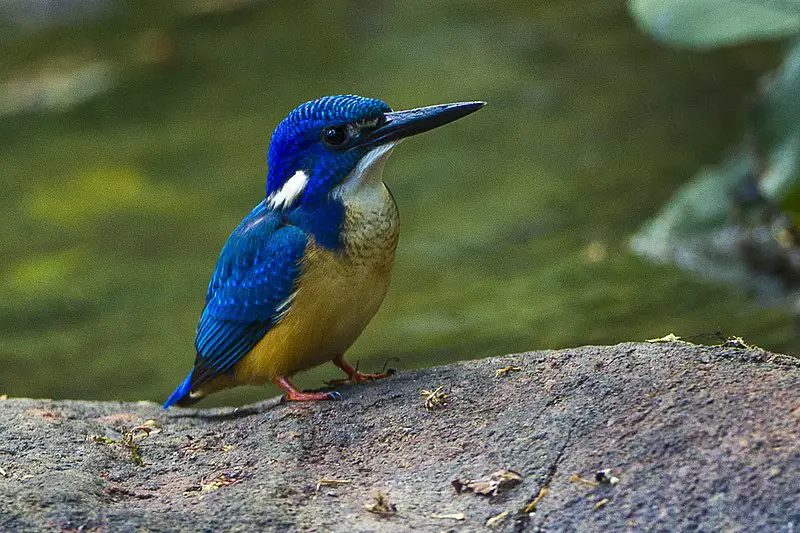
The Half-collared Kingfisher is a beautiful bird found in Southern and Eastern Africa. It has prominent white stripes on its head, neck and chest along with blue wings, back and rump.
This species feeds almost exclusively on fish from streams, rivers or larger bodies of water. They have an impressive range as well as they can be seen even in deserts where there are temporary pools of water during the wet season.
They also inhabit woodlands near permanent sources of fresh water such as lakes or dams providing them with plenty of food to feed their young ones too.
Their habitat provides them with lots of different prey which makes it easier for these birds to survive in this tough environment.
Scientific classification:
| Kingdom | Animalia |
| Phylum | Chordata |
| Class | Aves |
| Order | Coraciiformes |
| Family | Alcedinidae |
| Subfamily | Alcedininae |
| Genus | Alcedo |
| Species | A. semitorquata |
50. Abyssinian Ground Hornbill
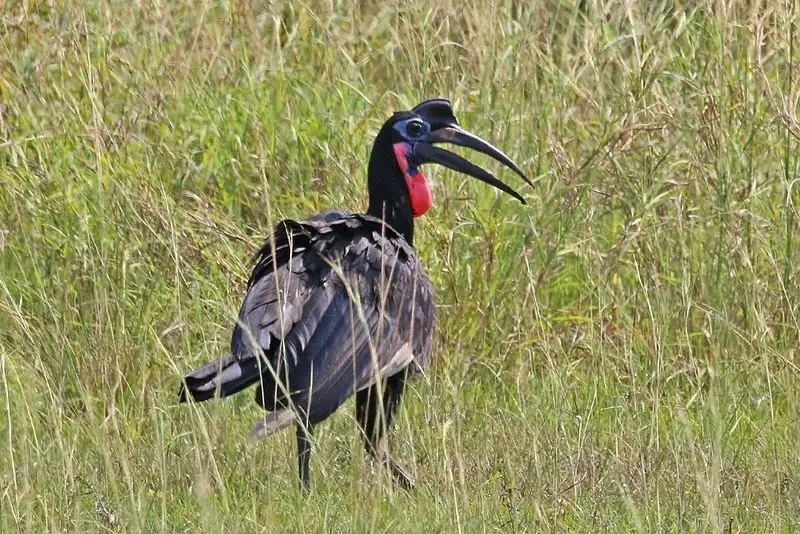
The Abyssinian ground hornbill is an African bird, found mainly north of the equator. It is one of two species of ground hornbills and second largest amongst all African Hornbills only surpassed by its slightly larger relative – southern ground hornbill.
This impressive bird was described by Georges-Louis Leclerc, Comte de Buffon in 1780’s and has a unique appearance with striking red facial skin surrounding bright yellow eyes.
The male birds are bigger than females and have different plumage colours (black/blue feathers) compared to their female companions who tend to be brownish grey.
They feed on insects, small mammals or reptiles which they hunt from the sky or find on land using their powerful feet for digging up prey items hidden underneath soil or sand.
Scientific classification:
| Kingdom | Animalia |
| Phylum | Chordata |
| Class | Aves |
| Order | Bucerotiformes |
| Family | Bucorvidae |
| Genus | Bucorvus |
| Species | B. abyssinicus |